Pledge to Support Vision 2030
Join Indigenous Tourism Team Canada and help make Canada the global leader in Indigenous tourism by 2030.

Destination Indigenous opens doors into the living cultures of Indigenous Peoples in Canada today through Indigenous nature and wildlife tours, cultural sharing, accommodation and relaxation, culinary experiences, shopping and more.
Home › Membership › British Columbia

British Columbia
Canada’s westernmost province is filled with breathtaking scenery and diverse geographic regions and climates. British Columbia is home to Métis and more than 200 distinct First Nations—one-third of all the Indigenous people in Canada.
Membership Info
ITAC is excited to have an incredible partnership with Indigenous Tourism BC (ITBC). Working together, the two organizations are furthering the progress of the Indigenous tourism industry in British Columbia and are providing Indigenous tourism operators with greater access to marketing, development and partnership opportunities.
ITBC members now receive a complimentary ITAC membership with benefits including:
- Access to development grants
- Subsidies to attend trade shows
- Business listings in our Indigenous Tourism Guide and website
- Coverage on ITAC’s social media channels
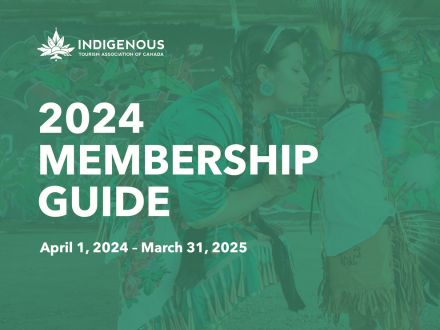
Become a Member!
Businesses located in BC should reach out directly to Indigenous Tourism BC (ITBC) to apply for membership. All ITBC Stakeholders are eligible for free ITAC membership. Some businesses may also qualify for a free Marketing Upgrade.
For more information please contact:

Indigenous Tourism BC
Itac partnerships in british columbia.

Indigenous Tourism British Columbia
Indigenous Tourism BC (ITBC) is a non-profit, Stakeholder-based organization committed to the continued growth of a sustainable, authentic and culturally rich Indigenous tourism industry in British Columbia.

Destination British Columbia
Destination BC is focused on attracting overnight visitors to the province, by promoting the Super, Natural British Columbia® brand to the world, and increasing tourism revenues by supporting industry in the development and delivery of remarkable experiences.

Private: Frank Antoine
Frank Antoine is the co-founder of Moccasin Trails, a cultural tourism company based in Kamloops, BC. He worked at Quaaout Lodge & Spa at Talking Rock Golf Resort for more than a decade and was vital in the development and marketing of authentic Indigenous cultural tourism programs and projects in the Skwlax community.
He is a strong cultural ambassador and proud to share the traditional knowledge he carries. Frank has sat on a variety of tourism boards, including the Adams River Salmon Society, Shuswap Trail Alliance, Hat Creek Society, McAbee Group, Thompson Okanagan Tourism Association, as well as Indigenous Tourism of British Columbia.
Recent British Columbia News

Our site uses cookies. Find out more by reading our Cookie Policy .

- Skip to main content
- Skip to main navigation
- Skip to site search
- Skip to side bar
- Skip to footer
BC Gov News
- News Archive
- Live Webcast
- Office of the Premier
- Agriculture and Food
- Attorney General
- Children and Family Development
- Citizens' Services
- Education and Child Care
- Emergency Management and Climate Readiness
- Energy, Mines and Low Carbon Innovation
- Environment and Climate Change Strategy
- Indigenous Relations and Reconciliation
- Intergovernmental Relations Secretariat
- Jobs, Economic Development and Innovation
- Mental Health and Addictions
- Municipal Affairs
- Post-Secondary Education and Future Skills
- Public Safety and Solicitor General
- Social Development and Poverty Reduction
Tourism, Arts, Culture and Sport
- Transportation and Infrastructure
- Water, Land and Resource Stewardship
New air ambulances are taking flight in B.C.

Expanded clinic will deliver more mental-health, addictions care for people in DTES
More from the premier.
- Factsheets & Opinion Editorials
- Search News
- Premier's Bio
Indigenous program strengthens long-term rural food supply
Canada, b.c. increasing food chain transparency, more from this ministry.
- Minister's Bio
Parliamentary secretary’s statement on Filipino Heritage Month

Whistleblower legislation expands to public post-secondary institutions
Expanded eligibility, new supports available for current, former youth in care.

B.C. strengthens Indigenous jurisdiction in child, family services
New building permit hub launched to speed up homebuilding.

High-speed internet coming to more northern B.C. communities
New, accessible school playgrounds open for students.

Construction of new Kamloops school begins
Grand forks getting better flood protection, federal and provincial governments shore up flood defences in richmond, province taking action to help people stay safe, cool.

B.C., Blueberry River First Nations take next step to heal land, balance industry interests
Stronger enforcement options will stop illegal activities in b.c. parks, new tool empowers citizens during environmental assessments, more supports coming for women, children facing domestic violence, exploitation, major barrier to first nation land registration eliminated, new tools will help people prepare, stay informed during emergencies.

B.C. provides update on old-growth conservation
B.c. delivers more mri, ct scans than ever before.

Hundreds more affordable homes coming to Metro Vancouver
Throne speech lays out vision of a stronger b.c. that works better for people.

Applications open for French-language services funding
B.c. takes action to strengthen northern rural communities, b.c. bolsters advanced wood manufacturing in kamloops, 2024 minimum wage increases confirmed, federal, provincial and territorial labour ministers discuss key challenges facing workers in canada.

Young people in East Kootenays benefit from more mental-health, addiction care
Bc growing communities fund supports five city of chilliwack projects, lion’s park washroom project completion, student housing coming to squamish.

TradeUpBC builds, enhances tradespeoples’ skills
Innovative replacement correctional centre now open in nanaimo, communities benefit from support for crime prevention, victim services, budget 2024 supports improvements to treatment, recovery services.

Changes aim to help people out of poverty
Province provides updates for fifa world cup 26.

Engagement launched for provincial Filipino cultural centre
Station design engagement begins for surrey langley skytrain.

People invited to test drive the next DriveBC
People advised to help prevent human-deer conflicts in urban areas, b.c. launches plan to revitalize tourism, creating opportunities for people.
Honourable Lana Popham
Email: [email protected]
Translations
News release, media contacts, ministry of tourism, arts, culture and sport.
- Ministry Website
- Ministry Photos
- Ministry Videos
Featured Topics
- Tourism Resources
- Arts and Culture
- Multiculturalism & Anti-Racism
- BC Athletic Commissioner
Featured Services
- DestinationBC
- Indigenous Tourism BC
- BC Arts Council

B.C. has launched a new three-year roadmap for rebuilding and revitalizing tourism, creating jobs and opportunities for people and communities in every part of the province.
“B.C. is a world-class destination, and we know the pandemic has hurt tourism,” said Melanie Mark, Minister of Tourism, Arts, Culture and Sport. “As the world opens up again, we’re working together to rebuild and revitalize this critical industry that adds so much to our planet, our people and our shared prosperity.”
The renewed Strategic Framework for Tourism responds to the call to action from the sector to support its recovery from COVID-19. It outlines a roadmap for a more resilient tourism sector by rebuilding to 2019 levels by 2024.
“Every single person connected to the tourism industry has demonstrated incredible fortitude and leadership during the COVID-19 pandemic,” Mark said. “I have been constantly impressed by the dedication and hard work of tourism operators and staff to pivot, realign their businesses and take care of each other. Now, together, we’re going to build back stronger by making our mark to ensure B.C. is first in line to benefit from pent-up demand for world-class tourism experiences.”
A flourishing tourism industry is a key pillar of the StrongerBC Economic Plan and contributes to an inclusive, sustainable and innovative economy that works for all people. Requested by B.C.’s tourism industry leaders and the Tourism Task Force, the update of this framework focuses on provincial priorities of putting people first; lasting and meaningful reconciliation; equity and anti-racism; a better future through fighting climate change; and a strong, sustainable economy that works for everyone.
To continue to support tourism businesses in B.C. to come back stronger, the Province is investing $1 million toward investments in event-bid preparation and sponsorships to attract large-scale arts, culture, and sport events, and public conferences and exhibitions. Investing now in event programs will kick-start the events industry’s recovery and will position B.C. as a safe, world-class, event-hosting jurisdiction once again. This is in addition to the $8 million government recently announced for the Business Events and Conferences Restart Fund to help restart business travel by attracting and hosting business events, conferences and exhibitions.
The Tourism Task Force emphasized how challenging it has been for industry to find the skilled workers it needs. This is why government is investing a further $2 million for post-secondary education and training to support B.C. students who enrol in tourism and hospitality certificate, diploma or degree programs, tourism-related apprenticeships, and trades training and development programs. This program, now in development, will prioritize students who are Indigenous, immigrant or refugee applicants, as well as those from rural or remote locations, and people with accessibility needs. More details will be provided soon.
As part of the Province’s continuing tourism recovery initiatives, government has committed $6 million this year through 2024 for Destination BC to market B.C. as a destination of choice in the highly competitive international market.
“We are very enthused about the Province's further investment in tourism recovery,” said Walt Judas, CEO, Tourism Industry Association of BC. “These funds come at an opportune time as our industry looks to rebuild our workforce, products and service levels to once again welcome guests from all over the world in the months and years ahead."
This funding builds on the $570 million the B.C. government has invested in recovery supports for the tourism sector, including the Small and Medium Sized Business Recovery Grant and the Circuit Breaker Business Relief Grant that are providing funding to nearly 8,200 tourism and hospitality businesses. This funding has supported programs such as the Festival, Fairs and Events Recovery Fund, Tourism Accommodation and Commercial Recreation Relief Fund, business support through Indigenous Tourism BC, and tourism infrastructure development.
Government investment in pandemic support for the hard-hit tourism sector was made early and continues with the sustained rollout of new recovery investment programs spanning the breadth of tourism recovery – from HR recruitment and retention, including engaging students, to resuming large-scale conferences and events, and furthering destination development.
A well-managed, thriving tourism industry makes life better for people: it is integral to the province’s economy and features prominently in B.C.’s economic plan. These initiatives, plus the resumption of strong international marketing efforts, position B.C. as a world-class destination with the programs in place to support a strong economic recovery that will be felt at all levels of community.
Krista Bax, CEO, go2HR –
“This program for training will no doubt spur interest from students as they see a supported pathway to a career in tourism and hospitality. We can’t wait to welcome these new students to our industry. Opportunities await them in an industry that values diversity and is proud to contribute to community vitality throughout our province.”
Richard Porges, CEO, Destination BC –
“Spending more time and money in B.C. compared to domestic travellers, international visitors are vital to the industry’s strong recovery. As the world reopens for travel, this additional funding will enable Destination BC to be even more effective in the incredibly competitive market for international travellers, bringing more tourism dollars to businesses in every corner of the province.”
Brenda Baptiste, chair, Indigenous Tourism BC –
“We look forward to revitalizing tourism, creating jobs, and building capacity and opportunities for Indigenous communities and businesses. Our industry has collaborated and found innovative solutions, and we look forward to a solid roadmap for recovery with the Strategic Tourism Framework.”
Quick Facts:
- The Tourism Task Force recommended the Strategic Framework be updated to reflect the new operating environment that has resulted from COVID-19 and to provide opportunities to support mid-term recovery and long-term resiliency for the tourism industry.
- Government will monitor the framework's delivery through key performance indicators that will be shared publicly.
- Budget 2022 committed almost $25 million to destination development, international marketing, business events and conferences recovery, marquee events bids, and tourism training.
Learn More:
For more information on B.C.'s tourism framework, visit: http://gov.bc.ca/tourismframework
- Tourism_Revitalization_Chinese(traditional).pdf
- Tourism_Revitalization_French.pdf
Related Articles
Province moves ahead on a safer amateur sport system.

Connect with the Ministry
View the Ministry's latest photos on Flickr.
Watch the Ministry's latest videos on YouTube.
Acknowledgment
The B.C. Public Service acknowledges the territories of First Nations around B.C. and is grateful to carry out our work on these lands. We acknowledge the rights, interests, priorities, and concerns of all Indigenous Peoples - First Nations, Métis, and Inuit - respecting and acknowledging their distinct cultures, histories, rights, laws, and governments.
Connect with Us:
- Newsletters
- Accessibility
Demand for Indigenous tourism outpacing availability of staff, creation of infrastructure
Industry expert says unmet need increases risk of cultural appropriation and inauthentic experiences.

Social Sharing
Deanna Lewis has worked as a B.C. tourist guide for about 20 years, but never has she seen so much interest from visitors wanting to learn about her Squamish culture.
Lewis, who is also an elected councillor with the Squamish Nation, works as an operator for Talaysay Tours. She takes tourists on interpretive walks around areas like Alice Lake in her people's territory, teaching them about things like local history and Indigenous use of local flora.
"We're in a really good time today as Indigenous people to be proud we're here," Lewis said. "It's empowering to ourselves and to the communities that we live in."
Keith Henry, president of the Indigenous Tourism Association of Canada, says there has been a surge in demand for Indigenous experiences across the country.
But Henry says only 133 of Canada's 1,900 Indigenous tourism operators are "export-ready" — meaning they have the expertise, staff and infrastructure to do business on an international scale.
"It's a really limiting factor," Henry said last week at the World Indigenous Business Forum in Vancouver, which attracted about 500 people from around the world.
Henry says Indigenous tourism in Canada has grown by $300 million from 2014 to 2017 to a total of $1.7 billion, and saw an increase of about 7,000 jobs. While tourism overall grew by 14 per cent, Indigenous tourism grew by 23 per cent.
Tourism industry research shows that more than one in three visitors to Canada are interested in an authentic Indigenous tourism experience.

'It can't be Disneyfied'
The industry's main challenge, according to Henry, is building capacity to meet demand.
That includes building better websites, training Indigenous staff and securing investment funding for infrastructure like shuttle buses and buildings.
Not having enough Indigenous-led companies has, in some cases, led to cultural appropriation and misrepresentation when large tour operators try to meet demand without enough Indigenous contribution, Henry says.
"These experiences need to be telling the truth about culture," he said. "It can't be contrived and it can't be Disneyfied."
Tourists can often sniff out inauthentic experiences, Henry pointed out.
- Indigenous tourism businesses booming in B.C. as visitors spend $705M a year
Rebuilding pride
Other Indigenous tourism operators from around the world, who were also at the Vancouver conference, cited similar growth in their countries.
Lewis said one of the biggest factors limiting growth at Talaysay Tours has been finding Indigenous guides who are willing and able to share stories about their culture.
The legacy of residential schools means previous generations have been hesitant about doing so.
"Some people wanted to hold that knowledge," Lewis said. "It was taken from them for a very long time. So that trust wasn't there, and that pride wasn't there."

But younger generations are brought up differently, she said, and are encouraged to learn about their customs, history and knowledge.
Lewis said sharing stories about her culture and the history of residential schools can be empowering and contributes to healing.
"I actually think my guests help me on my journey," she said.
- Feds boost Sask. Pride organizations to attract travellers
'Scratching the surface'
The Indigenous Tourism Association of Canada supports businesses with $317,000 in annual capacity-building grants, but last year it got $1.35 million in requests from 138 organizations.
"We're scratching the surface on the need right now," Henry said. "There's lots of community economic development work that needs to be done."
The association also works with governments and tourism associations to ensure Canada is marketed as more than "moose, beavers and RCMP," Henry said. Including Indigenous narratives in national identity has benefited countries like Australia and New Zealand.
More investment in Indigenous tourism has been shown to pay off, Henry said. In B.C. and Ontario, provincial investments have created a growing industry that contributes to rising GDP.
- New web series explores path to reconciliation through Indigenous cuisine
ABOUT THE AUTHOR

@MaryseZeidler
Maryse Zeidler is a reporter for CBC News on Vancouver Island. You can reach her at [email protected].
Related Stories
- P.E.I.'s tree nursery trying to keep up with post-Fiona demand

Want to create or adapt books like this? Learn more about how Pressbooks supports open publishing practices.
Chapter 12. Indigenous Tourism
12.4 Indigenous Tourism in BC
The Aboriginal Tourism Association of British Columbia (ATBC), now recognized as Indigenous Tourism BC (ITBC) , was founded in 1996 and was spurred by a research project that detailed the changing motivations of visitors to BC. The research results identified that specific target markets were particularly motivated to visit BC to experience local or regional Indigenous culture. Leveraging this information and initial organizational momentum, ITBC has matured to become a stable and effective organization by establishing funding partnerships with governments, developing a stakeholder membership model, and initiating a range of development strategies and tactics outlined in regularly updated action plans.
ITBC provides recognized leadership to support the estimated 401 Indigenous tourism related businesses operating in BC. These businesses generate $705 million indirect gross domestic output and provides 7,400 direct full-time jobs for Indigenous and non-Indigenous residents in BC through their activities (ITBC, 2019).
Spotlight On: Indigenous Tourism BC
Indigenous Tourism BC (ITBC) has gained an international reputation for effectiveness. Its role is to encourage the professional development of Indigenous cultural experiences and destinations in the province and to then support marketing those businesses to the world.
For more information featuring market-ready Indigenous tourism experiences within BC visit the external consumer-focused ITBC website .
For more details about ITBC’s history, structure and planning tools visit the ITBC internal corporate and stakeholder-focused website .
Since its inception, ITBC has grown to represent a diverse range of stakeholder businesses and organizations, including campgrounds, art galleries and gift shops, hotels, eco-lodges and resorts, Indigenous restaurants and catering services, cultural heritage sites and interpretive centres, kayak and canoe tours, adventure tourism operations, and guided hikes through heritage sites (Aboriginal Tourism BC, 2012). It has also proven adept at online promotion and social media, has also become world renowned for its strategic approach to Indigenous tourism development.
Take a Closer Look: Indigenous Tourism Trip Planner App
Indigenous Tourism BC marketing staff are regularly updating not just their consumer website, but also their social media platforms with rich visual assets, including promotional videos for the sector, regions, and specific companies.
In 2020, they also released a new app for Indigenous Tourism trip planning, which includes some virtual experiences. Learn more by downloading it on your digital device at Indigenous BC Trip Planner App .
A Strategic Approach to Growth
In 2017, the organization now known as ITBC released its five-year strategic plan, entitled “Pulling Together,” which identified targets for Indigenous cultural tourism industry success in BC. Its goals by 2022 included:
- Increased provincial revenue of $75 million
- Employment at 4,950 full-time equivalent positions
- 128 market-ready Indigenous cultural tourism businesses
To achieve these targets, the plan focused on five distinct strategic performance areas:
- Experience Development
- Partnerships
- Organizational Excellence
Following good overall tourism planning principles, ITBC ensured its plan aligned with Destination BC’s strategy, Welcoming Visitors—Benefiting Locals—Working Together, A Strategic Framework for Tourism in BC , as well as Canada’s federal tourism strategy. Consistent with this sustained alignment, recent efforts have placed renewed emphasis on the need for market readiness.
Push for Market Readiness
As we’ve learned elsewhere in this textbook, today’s travellers are more complex than in the past and have higher expectations. Potential guests are well acquainted with technology and have the world at their fingertips. For this reason, it’s important that Indigenous operators ensure they are sufficiently ready to run as a tourism business and compete in an increasingly crowded tourism marketplace.
There are three categories of readiness, each with a set of criteria that must be met (Aboriginal Tourism Association of Canada, 2013):
- A visitor-ready operation is often a start-up or small operation that might qualify for a listing in a tourism directory but not be considered ready for cost-shared promotions with other businesses due to lack of amenities or predictability.
- A market-ready business must meet visitor-ready criteria plus demonstrate a number of other strengths around customer service, marketing materials, published pricing and payments policies, short response times and reservations systems, and so on.
- Export-ready criteria include the previous categories, plus sophisticated travel distribution trade channels to attract out-of-town visitors. They provide highly reliable services to all guests, particularly those traveling with groups.
By educating cultural tourism businesses about these standards, and then creating incentives for marketing opportunities, ITBC helps to raise the bar for BC Indigenous cultural tourism experiences. Its goal is to support as many operators toward market readiness (the second category) as possible so that they may eventually become export ready alongside other BC tourism experiences.
Drag the following descriptors to the appropriate category for market readiness:
Take a Closer Look: Authentic Indigenous
Authentic Indigenous is a marketing initiative by Indigenous Tourism BC (ITBC) – a successful designation program that identifies strong cultural Indigenous tourism experiences as Authentic Indigenous. With this designation, ITBC meets the demands of travellers seeking unique, educational, eco-friendly and culturally appropriate experiences within Indigenous communities across BC. Find out more by visiting the Authentic Indigenous web page .
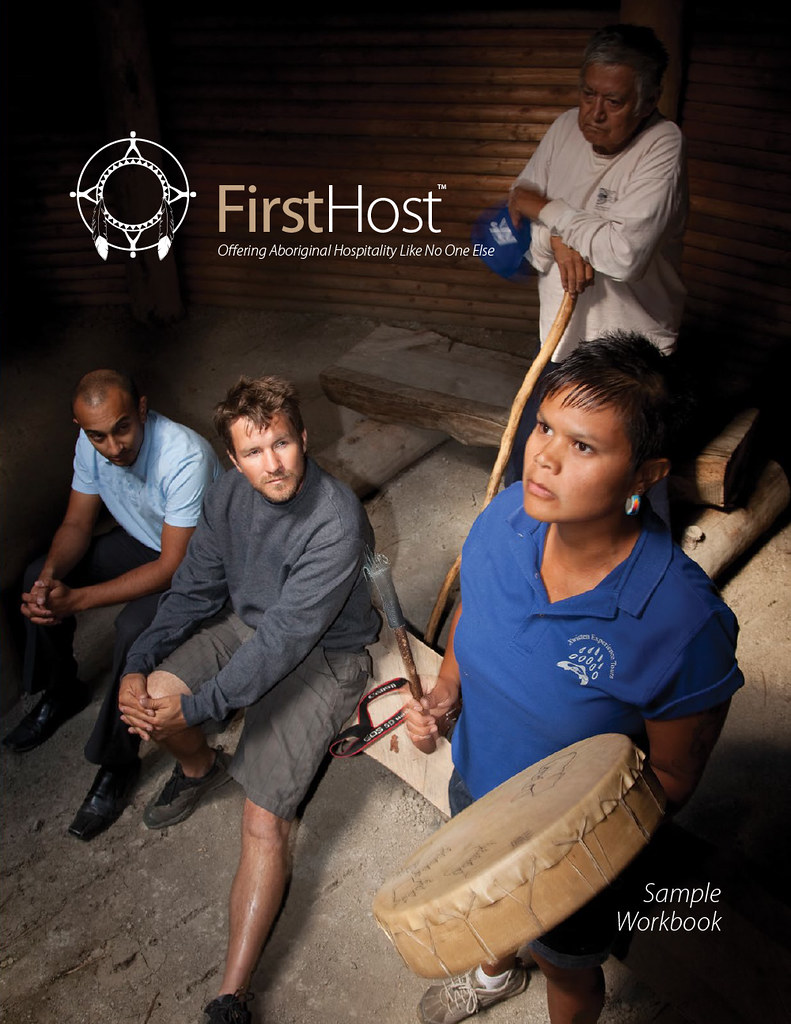
Another key component of the Indigenous tourism experience is the host. In BC, the FirstHost program supports the development of Indigenous hosts who are well trained, know what guests are looking for, and who can help provide an authentic cultural experience. The one-day tourism workshop is offered through ITBC and delivered throughout British Columbia
FirstHost was inspired by Hawaiian tourism pioneer, Dr. George Kanahele (1913-2000), who saw the impact tourism was having on indigenous culture and set out to educate the industry that “the relationship between place, host and guest must be one of equality” (Native Education College, 2014, p. 28). Participants learn about hospitality service delivery and the special importance of the host, guest, and place relationship. This well-received workshop, delivered by Indigenous trainers, is another reason Indigenous tourism continues to grow stronger in the province.
Take a Closer Look: Aboriginal Ecotourism Training Program
The Aboriginal Ecotourism Training Program (AETP) was born through a desire to increase workforce and community capacity for Indigenous tourism in coastal BC and developed in partnership between Vancouver Island University (VIU), North Island College (NIC), and the Heiltsuk Tribal Council (HTC), with support from Indigenous Tourism BC (ITBC) and funding through the Canada-British Columbia Job Fund.
Since 2014, 70 graduates from over 27 First Nations have successfully completed the Aboriginal Ecotourism Training Program (AETP) that features an innovative place-based, culturally relevant and experiential design to post-secondary learning. Many of these students have continued in the tourism sector or are engaged in ongoing post-secondary education in business and tourism.
Learn more through a video on the Aboriginal Ecotourism Training Program and the article Adventures in Ecotourism: Building Partnerships, Collaborations and Trust through Aboriginal Education .

Examples of BC Indigenous Tourism Development
Spotlight On: Moccasin Trails
Many exceptional leaders and entrepreneurs in Indigenous Tourism wear multiple hats. Besides family, community, and cultural responsibilities, this often includes many other complex roles within Indigenous Tourism development through sector, regional, and national associations, plus outreach as consultants beyond their own tourism business — sharing expertise that bridges cultures and systems.
One dynamic example is through the suite of tourism experiences, services and leadership offered by Frank Antoine and Greg Hopf of Moccasin Trails in the Kamloops area.
They describe that, “We wanted to bring people from around the world on the ancestral paths our people walked, have them taste the food we ate, sing the songs we sang, hear the stories that were passed down orally from generations ago, and travel down the rivers we canoed. In order to truly learn about our culture we felt the only way was to touch, smell, see, hear, and feel it. Our journey started hundreds of years ago but your journey will start right now with us at Moccasin Trails .
Their vision and motivation is very representative of the tangible, tireless and authentic energy that underlies much of Indigenous Tourism development.
Indigenous tourism in BC offers diverse visitor opportunities that range from arts and cultural attractions to authentic food and beverage experiences to wildlife tours that highlight the spiritual significance of BC’s natural places for Indigenous people.
Take a Closer Look: Indigenous Experiences — A Journey
The consumer website for Indigenous Tourism BC features things to do, places to see, trip planning tools, featured itineraries and stories. For more information, visit the Indigenous Tourism BC website .
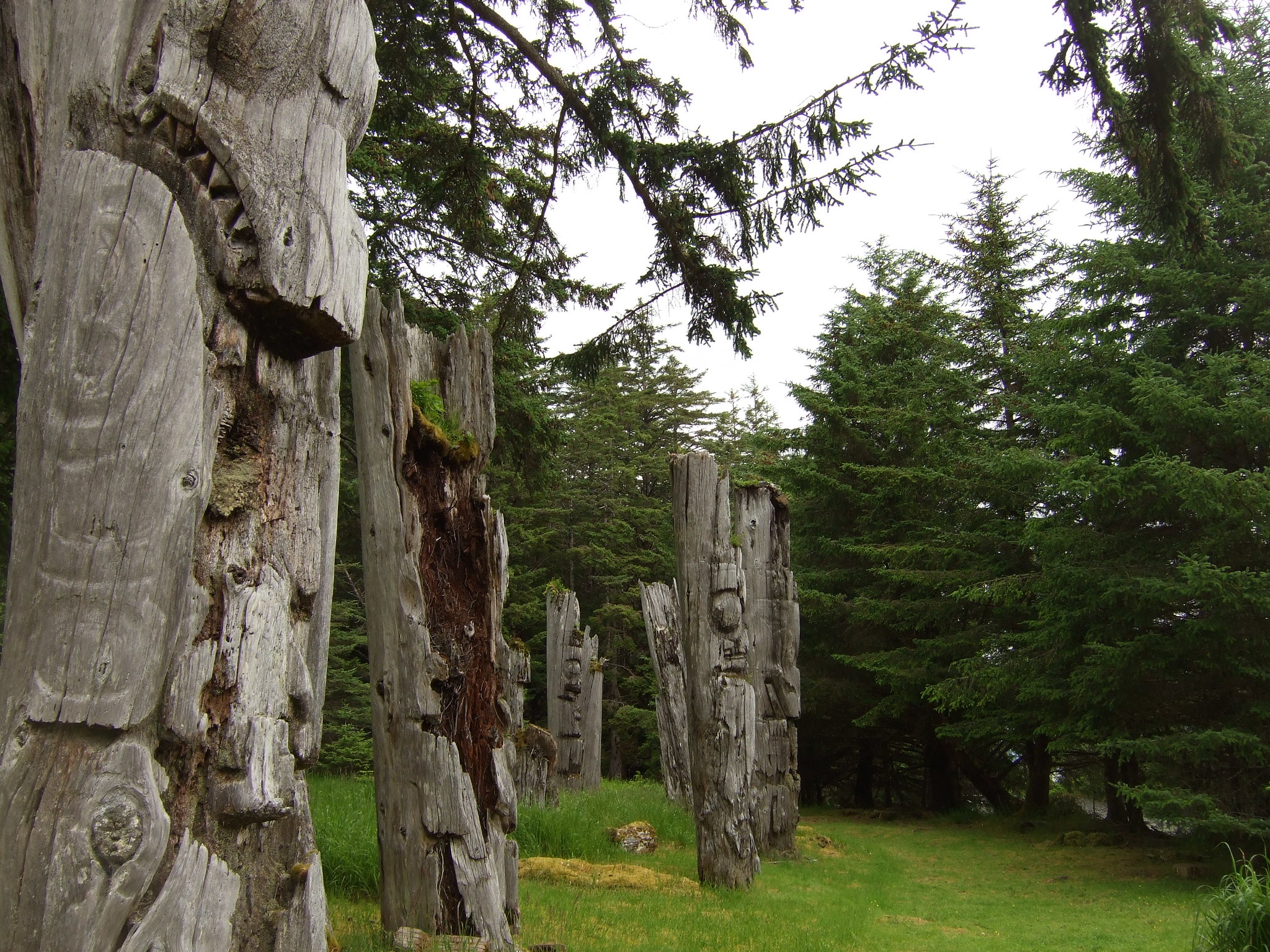
Examples of BC Indigenous tourism enterprises include:
- The Bill Reid Gallery of Northwest Coast Art in the heart of downtown Vancouver, home of the permanent collection of Bill Reid as well as contemporary exhibitions.
- St. Eugene Golf Resort & Casino , a First Nation-owned 4.5-star hotel with a golf course and casino, outside of Cranbrook in the Kootenay Rockies.
- Cariboo Chilcotin Jetboat Adventures , offering exciting and scenic tours of the Fraser River.
- Salmon n’ Bannock Bistro , offering authentic Indigenous food in urban Vancouver.
- Spirit Bear Lodge , in the Great Bear Rainforest, specialize in wildlife and Indigenous cultural experiences.
- Talaysay Tours offering Indigenous cultural and eco-tourism experiences in and around Vancouver, Squamish and the Sunshine Coast.
- Skwachàys Lodge , a downtown Vancouver luxury hotel, art gallery and store operating as a social enterprise and supporting Indigenous artists.
Take a Closer Look: UNESCO World Heritage List
This list, evolving from 1972 World Heritage Convention, identifies outstanding significant sites across the globe, linking the concepts of nature conservation and the preservation of cultural properties. The convention sets out the duties of governments in identifying potential sites and their role in protecting and preserving them. The list features an interactive map and an alphabetical list. To explore the more than 1,100 properties on the list, including 20 sites in Canada, visit the UNESCO World Heritage List .
The village of SG̱ang Gwaay Llnagaay (formerly Ninstints or Nan Sdins) is a prominent example of a UNESCO World Heritage Site in Canada, located on a small island off the west coast of Haida Gwaii.
While ITBC members are too numerous to detail here, one BC First Nation is often in the spotlight for its significant tourism and economic development activity, thanks to its physical and cultural assets and positive leadership. Let’s take a closer look at this example.
Osoyoos Indian Band
The Osoyoos Indian Band (OIB) is located in the Interior of BC. A main goal of the OIB has been to move from dependency to a sustainable economy like that which existed before contact (Centre for First Nations Governance, 2013).
Take a Closer Look: Centre for First Nations Governance Success Stories
The Centre for First Nations Governance is a non-profit organization dedicated to providing self-governance support to First Nations communities across Canada. It helps with planning, governance, the establishment of laws, and nation-rebuilding efforts. Its website features success stories, in video format, that highlight these efforts. For more information, visit the Centre for First Nations Governance website for Success Stories.
Okanagan First Nations once travelled widely to fish, gather, and hunt. Each year, the first harvests of roots, berries, fish, and game were celebrated during ceremonies honouring the food chiefs who provided for the people. During the winter, people returned to permanent winter villages. The names of many of the settlements in the Okanagan Valley — Osoyoos, Keremeos, Penticton and Kelowna — come from Indigenous words for these settled areas and attest to the long history of the Syilx people on this land.
Forty-five years ago, the OIB was bankrupt and living off government social assistance. In 1988, it sought to turn the tide on this history and created the Osoyoos Indian Band Development Corporation (OIBDC). Through focused leadership and initiative, the band has been able to develop agriculture, eco-tourism, and commercial, industrial, and residential developments on its 32,200 acre reserve lands. It does have the good fortune to be located in one of Canada’s premier agricultural and tourism regions; however, it has also taken a determined and well-crafted effort to become an example of Indigenous economic success.
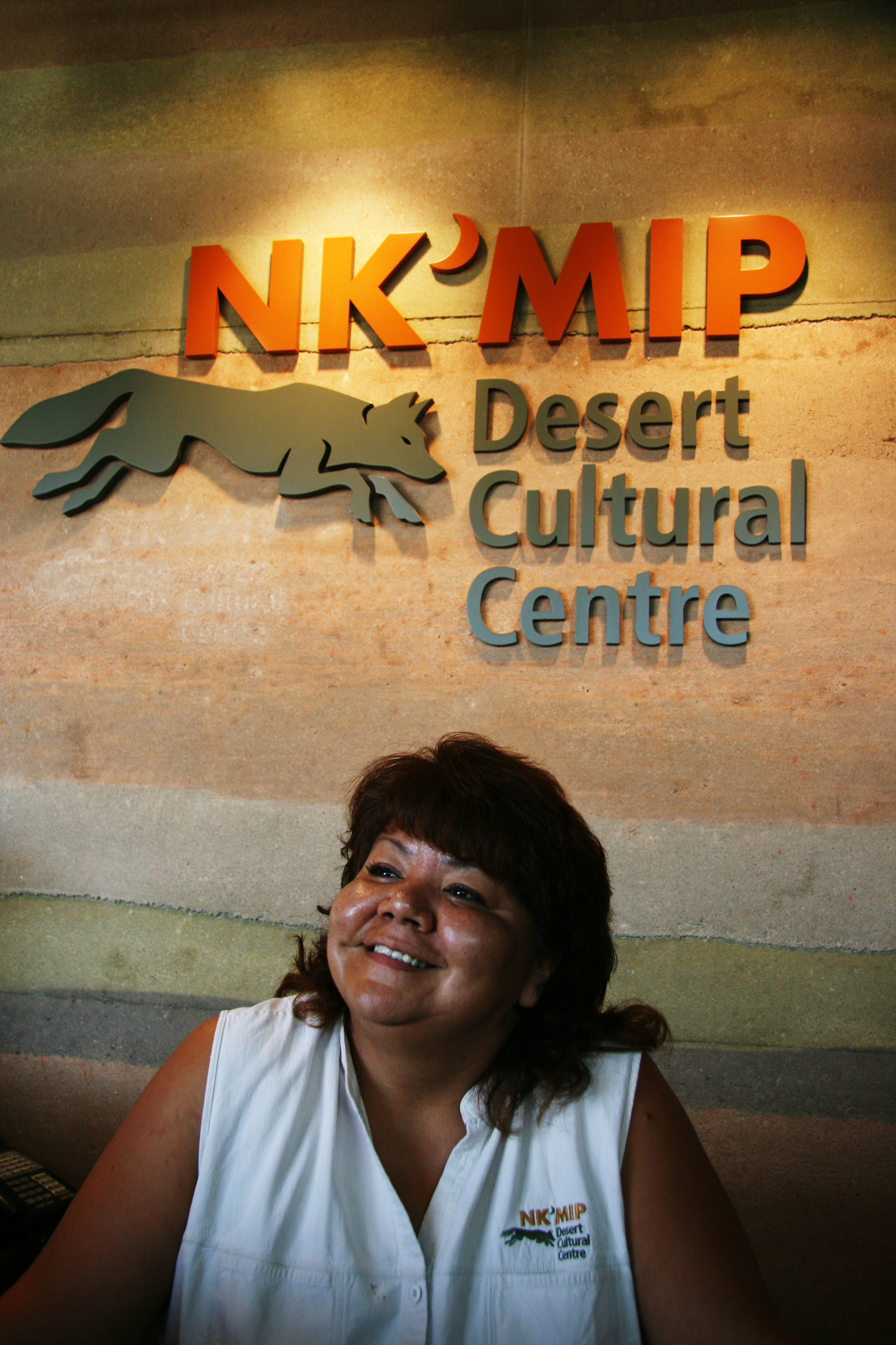
The OIBDC manages a number of tourism-related businesses including the Nk’Mip Campground and RV Park, Nk’Mip Canyon Desert Golf Course, Nk’Mip Desert Cultural Centre. In addition, the OIBDC have several prominent tourism-related partnerships, including with Baldy Mt. Ski Resort, Nk’Mip Cellars, Spirit Ridge Resort, and others (OIB, 2020). The area attracts about 400,000 visitors per year, and at peak tourist season there is essentially full employment among the more than 470 members of the Osoyoos reserve.
In addition to the core businesses and partnerships, many secondary businesses have formed. For example, the award-winning Nk’Mip Desert Cultural Centre promotes conservation efforts for desert wildlife and has also helped to create several spinoff businesses, including a landscaping business, a greenhouse for indigenous plants, a website development business, and a community arts and crafts market (LinkBC, 2012).
The organization responsible for developing and marketing Indigenous tourism experiences in B.C. in a strategic way. Marketing stakeholder members are over 51% owned and operated by First Nations, Métis, and Inuit.
Often a start-up or small operation that might qualify for a listing in a tourism directory but is not ready for more complex promotions (like cooperative marketing); may not have a predictable business cycle or offerings.
A business that goes beyond visitor readiness to demonstrate strengths in customer service, marketing, pricing and payments policies, response times and reservations systems, and so on.
The highest level of market readiness, with sophisticated travel distribution trade channels, to attract out-of-town visitors and highly reliable service standards, particularly with groups.
An Indigenous tourism workshop focusing on hospitality service delivery and the special importance of the host, guest, and place relationship.
Introduction to Tourism and Hospitality in BC - 2nd Edition Copyright © 2015, 2020, 2021 by Morgan Westcott and Wendy Anderson, Eds is licensed under a Creative Commons Attribution 4.0 International License , except where otherwise noted.
Share This Book

- Executive Leadership
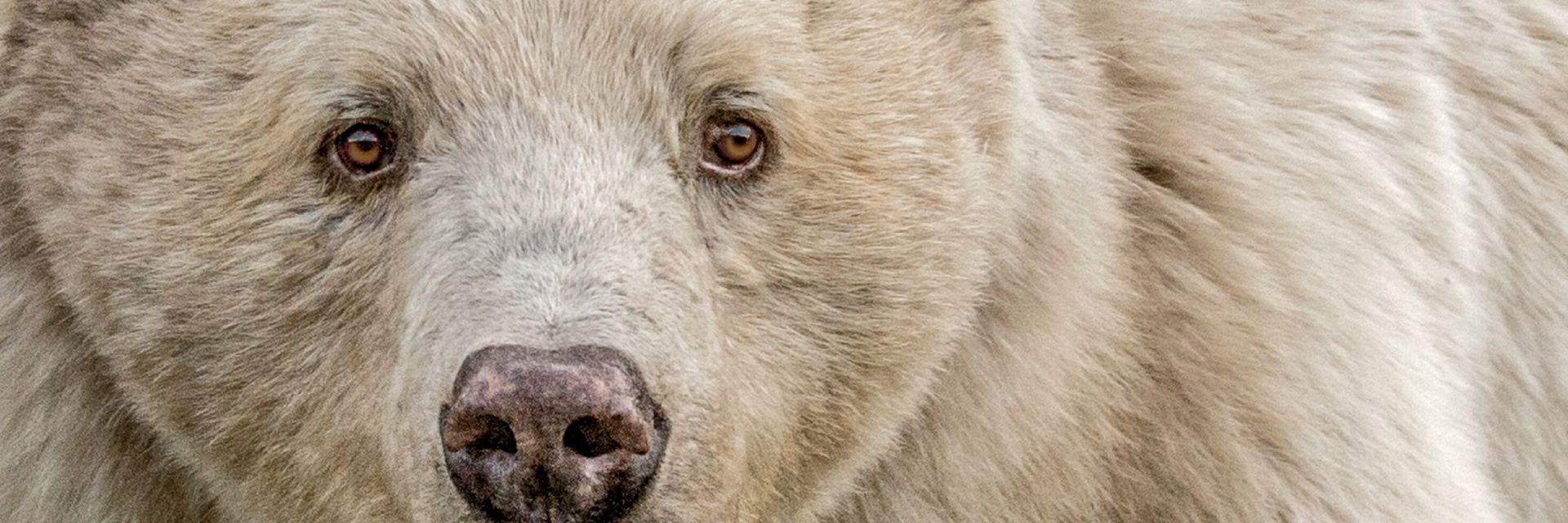
Spirit Bear in the Great Bear Rainforest
Meet Our Executive Leadership Team
Destination BC’s executive team is led by the CEO and includes leaders from across the organization’s core business groups. The CEO achieves corporate goals and priorities set by the Board, sets standards for organizational conduct, and recommends new initiatives to the Board.
Richard is Destination BC’s President and CEO, and previously served as the corporation’s Vice President of Corporate Development.
Richard Porges is Destination BC’s President and CEO, and previously served as the corporation’s Vice President of Corporate Development. Richard joined the corporation’s research department in 1999 and moved to progressively more senior roles within Destination BC and the provincial government. Before joining Destination BC, Richard taught in the Economics, MBA, and MPA programs at the University of Victoria, and served as a consultant for several government and non-profit organizations. Richard holds an MA in Economics from Simon Fraser University.
Maya is responsible for our global marketing efforts in 14 domestic and international markets to drive over 21 million trips to and within BC annually.
Maya Lange is the VP, Global Marketing for Destination BC. Maya is responsible for our global marketing efforts in 14 domestic and international markets to drive over 21 million trips to and within BC annually. Maya has a proven track record of managing strong brands having worked in data-driven digital marketing and content marketing in Germany, France, USA and Canada. Maya holds an MBA from the Rotman School of Management at the University of Toronto. A passionate British Columbian raising a young family, she loves skiing, sailing, swimming, and exploring BC’s hidden wonders.
Neil is responsible for leading the comprehensive range of core corporate activities that comprise the five areas of responsibility of the Corporate Development division.
In his current role as Vice President of Corporate Development, Neil has gained great respect from Destination BC’s Board of Directors, developed strong relationships with our colleagues in core government, negotiated important agreements with industry, and provided leadership to Destination BC staff. Neil is responsible for leading the comprehensive range of core corporate activities that comprise the five areas of responsibility of the Corporate Development division - Corporate Services, People and Development, Research and Analytics, Corporate Communications, and Corporate Planning and Information Management. Neil joined the corporation in early 2019 as Destination BC’s Chief Financial Officer and was responsible for the financial oversight of the corporation, including financial reporting and policy, budgeting, forecasting, and corporate planning. He was also accountable for human resources, procurement and contracting, risk management, records management, and legal services. Neil leveraged his experience in Finance to ensure the organization received smooth audits, delivered successful research projects, met recruitment targets, developed progressive corporate planning and ensured impactful corporate communications. Neil then moved into the acting role of Vice President, Corporate Development, for one year before moving into the permanent position. Prior to joining Destination BC, Neil held several senior management roles within the public sector. Neil holds a Bachelor of Commerce from Royal Roads University and is a Chartered Professional Accountant. Away from work, Neil is passionate about enjoying BC's outdoors with his young family.
Alison is responsible for our destination management programs and efforts with a focus on supporting the revitalization of a strong and sustainable tourism sector across the province.
Alison oversees Destination BC’s destination management programs, with a focus on supporting the revitalization of a strong and sustainable tourism sector. She leads the Destination Management team in implementing annual plans, programs and projects; work with the executive team to support corporate-wide projects, such as Invest in Iconics, Destination Stewardship, and Diversity, Equity, Inclusion and Accessibility; and collaborate with Indigenous Tourism BC on projects specific to Indigenous communities. Alison joined Destination BC in 2006 as a member of the research department. During her 16-year tenure, she has taken on progressively senior roles, most recently as Director of Destination & Industry Development. Her career highlights include partnering with RDMOs and Ministry staff to create a new provincial destination development program; and developing provincial, regional and local area strategies in cooperation with Indigenous communities, residents, businesses, economic development agencies, government and the tourism industry. Alison holds a Masters of Applied Environmental Studies: Tourism Policy & Planning from the University of Waterloo. She is an active volunteer in her local youth soccer and lacrosse communities, and sits on the board of the Invasive Species Council of BC. During her free time, she enjoys exploring the outdoors with her family in their home of Coquitlam, on the unceded traditional territory of the Coast Salish Peoples and the Kwikwetlem First Nation.
Subscribe to Directions , Destination BC’s e-newsletter, for the latest news and program updates.
Receive updates, research and news you can use.
Destination BC
Official websites.

HelloBC.com
Be inspired to start planning your BC Vacation.

Travel Media
Information for journalists, editors and broadcasters.
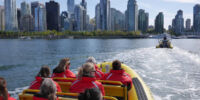
Travel Trade
Tools, resources and contacts to assist you in promoting BC.

Tourism Business Portal
Online, self-service business listings system for tourism industry.
Subscribe to our newsletter
- Tour Operators
- Destinations
- Hotels & Resorts
- Digital Edition Spring 2024
- Digital Edition Fall 2023
- Travel Webcast
- Voices of Travel
- Agents' Choice Gala
- Suppliers Kit
- Canadian Travel Press
- Travel Courier
- Agents' Choice 2023
- Agents' Choice 2022
- Offshore Travel Magazine
- Culinary Travels
ITBC Has A Plan To Empower Indigenous Tourism in BC
August 17, 2023
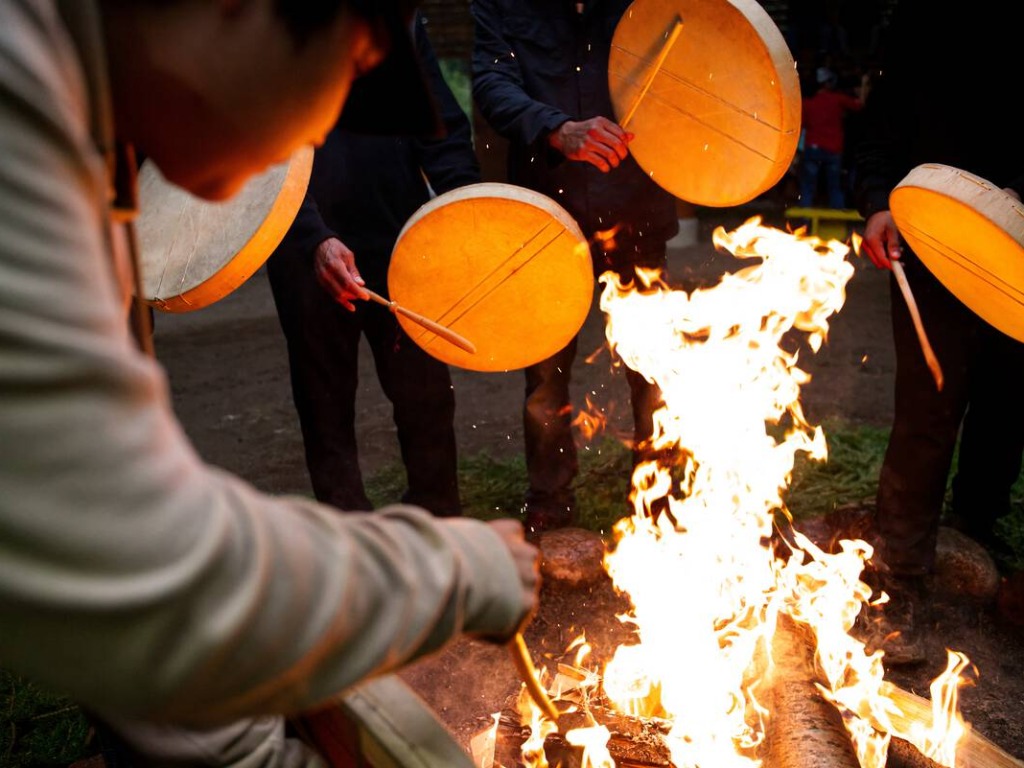
Indigenous Tourism BC (ITBC) has released Strengthening Our Roots and Branches: Corporate Strategy 2023-2027 — a five-year plan that is proactive to the increased interest in Indigenous tourism from Indigenous communities and entrepreneurs.
The strategy is committed to renewed partnerships, organizational structure and will focus on key areas that will create a healthy, sustainable and prosperous Indigenous cultural tourism sector in BC.
ITBC’s five-year plan intends to uplift Indigenous tourism in BC beyond full recovery from the pandemic, with dedicated measures to support the growth of Indigenous economies, increase the capacity and competitiveness of Indigenous businesses, execute a focused and insightful marketing strategy, accelerate experience development, establish a strong Indigenous tourism story, and strengthen ITBC leadership.
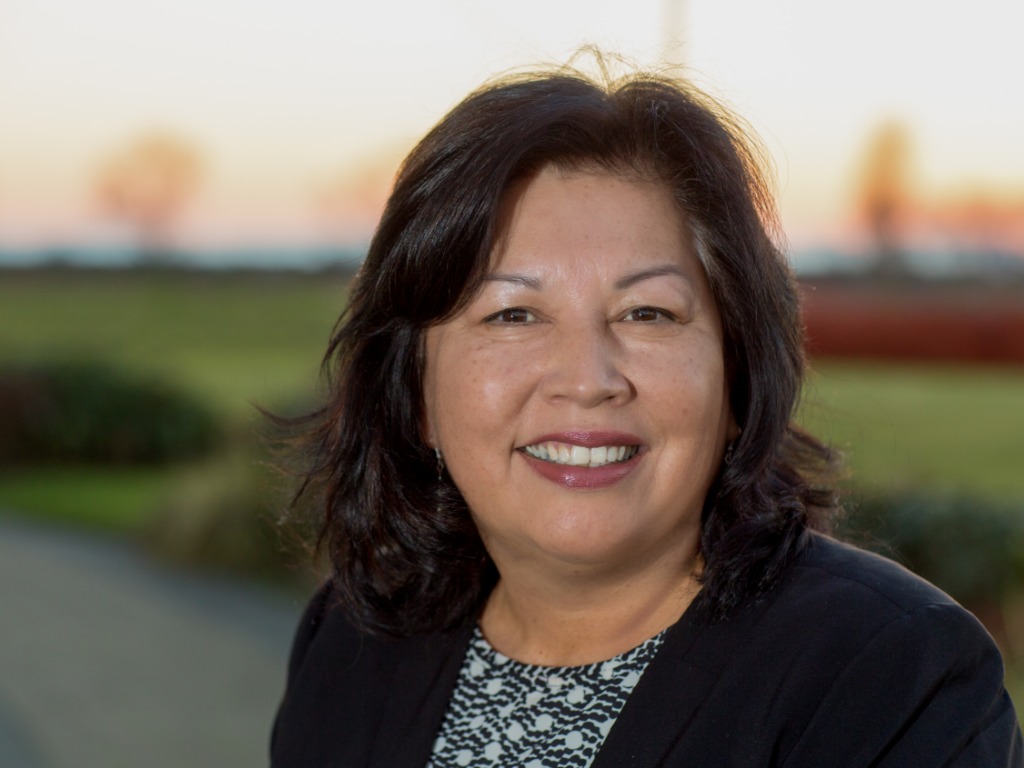
Brenda Baptiste, ITBC Chair, explained that: “The seed that became ITBC was planted almost 30 years ago. We are grateful for the nurturing and support of the Indigenous Peoples, partners, and allies who have helped us grow into a mighty tree. Now, it is time to strengthen our roots and branches to support Indigenous Stakeholders and our partners to take bigger steps forward, including building reconciliation and stewardship.”
During the three years of ITBC’s last corporate strategy, there were significant changes in the environment and ecosystem in BC, such as:
- In 2019, The Declaration on the Rights of Indigenous Peoples Acts (Declaration Act) was unanimously passed by the BC Legislative Assembly
- In March 2020, the pandemic hit, at a time when Indigenous Tourism was about to outpace non-Indigenous tourism
- In May 2021, the Kamloops Indian Residential School findings were announced
- In March 2022, the first Declaration on the Rights of Indigenous Peoples Act action plan was presented to create a better future for all generations to come.
These noteworthy activities inspired an increased public interest in Indigenous wellness and Indigenous tourism experiences, growing interest in tourism from Indigenous communities, and increased investment from federal and provincial governments.
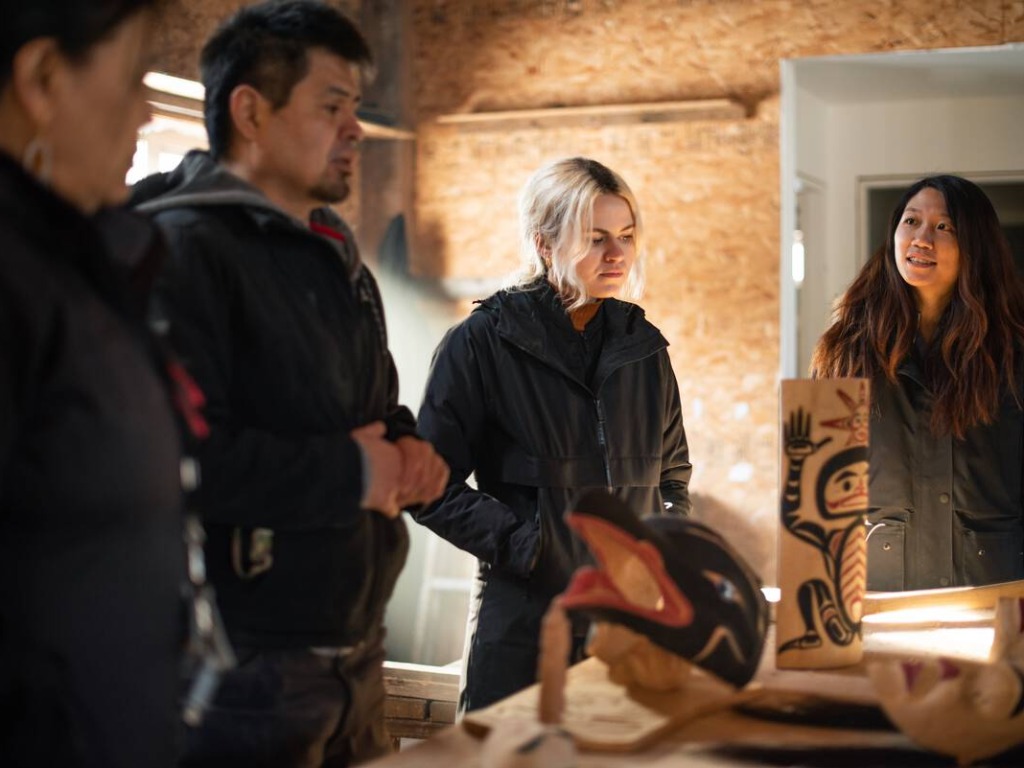
Frank Antoine, ITBC Co-chair, pointed out that: “There is more work to do–we’re still growing. We’re creating an innovative organization and a powerful alliance of Indigenous and non-Indigenous Peoples to develop a system of support that upholds Indigenous-led plans for thriving communities, cultures, and lands. We want to embrace tourism as a means of empowerment and growth for Indigenous Peoples in BC.”
Paula Amos, ITBC Chief Marketing and Development Officer, said that: “Embracing the richness of Indigenous cultures, we unveil our corporate strategy for Indigenous tourism in BC. Together we are planning for the short-long term, while continuing to stay focused on our goals, asking the right questions from Indigenous peoples, and identifying opportunities that are innovative and position ITBC to be a competitive leader for Indigenous Tourism.”
Strengthening Our Roots and Branches: Corporate Strategy 2023-2027 seeks to achieve goals across four key areas of focus: leadership and organizational innovation, partnership and special projects, experience development, and marketing. While the plan is supported by a $30 million investment over five years from multiple partners, ITBC continues to look for and secure funding opportunities to address unfunded core budget items and project activities to solidify long-term financial security for Indigenous tourism in BC.
Go to www.indigenousbc.com for more.
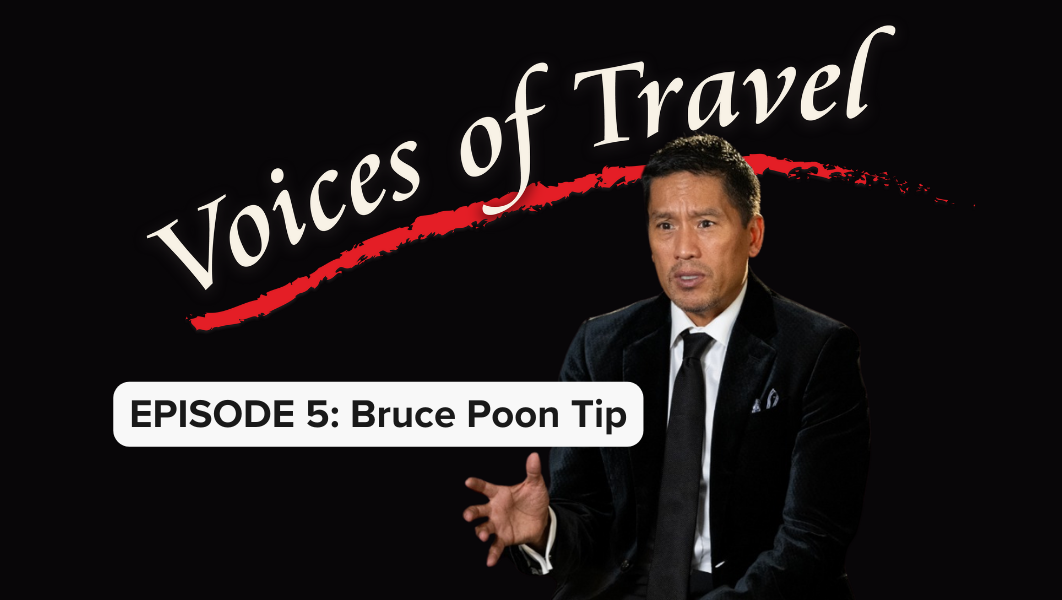
Voices of Travel: The Next Chapters: Bruce Poon Tip’s Eureka Moment
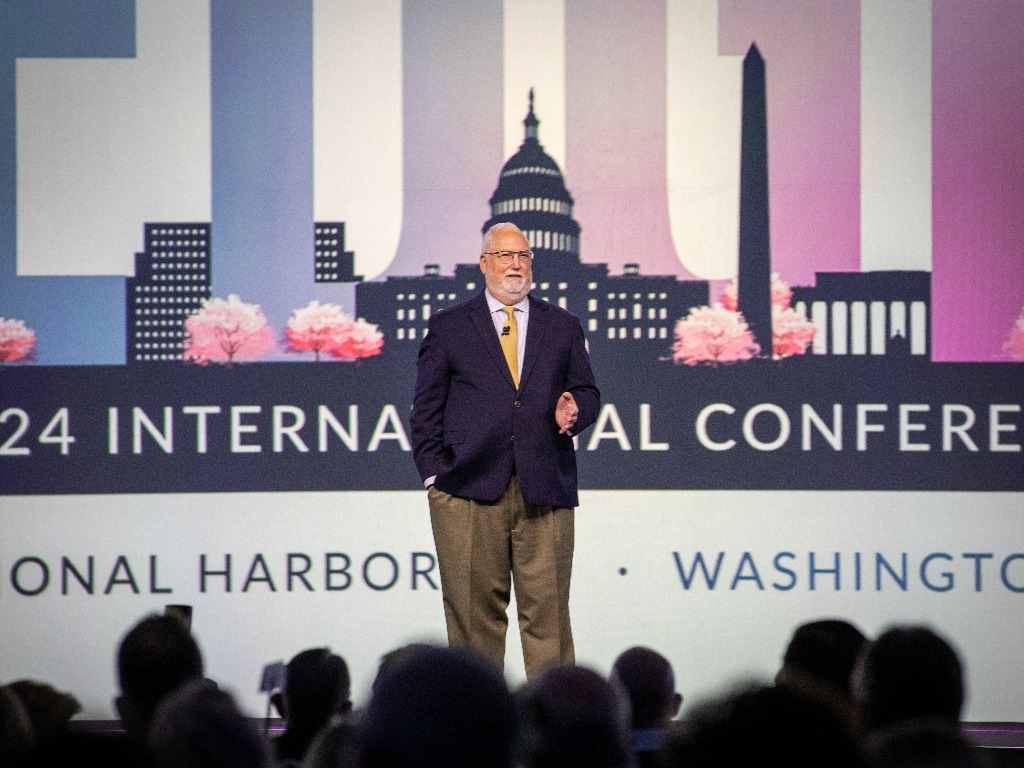
TL Network’s EDGE conference underway in Washington

- school Campus Bookshelves
- menu_book Bookshelves
- perm_media Learning Objects
- login Login
- how_to_reg Request Instructor Account
- hub Instructor Commons
Margin Size
- Download Page (PDF)
- Download Full Book (PDF)
- Periodic Table
- Physics Constants
- Scientific Calculator
- Reference & Cite
- Tools expand_more
- Readability
selected template will load here
This action is not available.

12.4: Indigenous Tourism in BC
- Last updated
- Save as PDF
- Page ID 9374

- Morgan Westcott & Wendy Anderson et al.
\( \newcommand{\vecs}[1]{\overset { \scriptstyle \rightharpoonup} {\mathbf{#1}} } \)
\( \newcommand{\vecd}[1]{\overset{-\!-\!\rightharpoonup}{\vphantom{a}\smash {#1}}} \)
\( \newcommand{\id}{\mathrm{id}}\) \( \newcommand{\Span}{\mathrm{span}}\)
( \newcommand{\kernel}{\mathrm{null}\,}\) \( \newcommand{\range}{\mathrm{range}\,}\)
\( \newcommand{\RealPart}{\mathrm{Re}}\) \( \newcommand{\ImaginaryPart}{\mathrm{Im}}\)
\( \newcommand{\Argument}{\mathrm{Arg}}\) \( \newcommand{\norm}[1]{\| #1 \|}\)
\( \newcommand{\inner}[2]{\langle #1, #2 \rangle}\)
\( \newcommand{\Span}{\mathrm{span}}\)
\( \newcommand{\id}{\mathrm{id}}\)
\( \newcommand{\kernel}{\mathrm{null}\,}\)
\( \newcommand{\range}{\mathrm{range}\,}\)
\( \newcommand{\RealPart}{\mathrm{Re}}\)
\( \newcommand{\ImaginaryPart}{\mathrm{Im}}\)
\( \newcommand{\Argument}{\mathrm{Arg}}\)
\( \newcommand{\norm}[1]{\| #1 \|}\)
\( \newcommand{\Span}{\mathrm{span}}\) \( \newcommand{\AA}{\unicode[.8,0]{x212B}}\)
\( \newcommand{\vectorA}[1]{\vec{#1}} % arrow\)
\( \newcommand{\vectorAt}[1]{\vec{\text{#1}}} % arrow\)
\( \newcommand{\vectorB}[1]{\overset { \scriptstyle \rightharpoonup} {\mathbf{#1}} } \)
\( \newcommand{\vectorC}[1]{\textbf{#1}} \)
\( \newcommand{\vectorD}[1]{\overrightarrow{#1}} \)
\( \newcommand{\vectorDt}[1]{\overrightarrow{\text{#1}}} \)
\( \newcommand{\vectE}[1]{\overset{-\!-\!\rightharpoonup}{\vphantom{a}\smash{\mathbf {#1}}}} \)
The Aboriginal Tourism Association of British Columbia (ATBC), now recognized as Indigenous Tourism BC (ITBC), was founded in 1996 and was spurred by a research project that detailed the changing motivations of visitors to BC. The research results identified that specific target markets were particularly motivated to visit BC to experience local or regional Indigenous culture. Leveraging this information and initial organizational momentum, ITBC has matured to become a stable and effective organization by establishing funding partnerships with governments, developing a stakeholder membership model, and initiating a range of development strategies and tactics outlined in regularly updated action plans.
ITBC provides recognized leadership to support the estimated 401 Indigenous tourism related businesses operating in BC. These businesses generate $705 million indirect gross domestic output and provides 7,400 direct full-time jobs for Indigenous and non-Indigenous residents in BC through their activities (ITBC, 2019).
Spotlight On: Indigenous Tourism BC
Indigenous Tourism BC (ITBC) has gained an international reputation for effectiveness. Its role is to encourage the professional development of Indigenous cultural experiences and destinations in the province and to then support marketing those businesses to the world.
For more information featuring market-ready Indigenous tourism experiences within BC visit the external consumer-focused ITBC website .
For more details about ITBC’s history, structure and planning tools visit the ITBC internal corporate and stakeholder-focused website .
Since its inception, ITBC has grown to represent a diverse range of stakeholder businesses and organizations, including campgrounds, art galleries and gift shops, hotels, eco-lodges and resorts, Indigenous restaurants and catering services, cultural heritage sites and interpretive centres, kayak and canoe tours, adventure tourism operations, and guided hikes through heritage sites (Aboriginal Tourism BC, 2012). It has also proven adept at online promotion and social media, has also become world renowned for its strategic approach to Indigenous tourism development.
Take a Closer Look: Indigenous Tourism Trip Planner App
Indigenous Tourism BC marketing staff are regularly updating not just their consumer website, but also their social media platforms with rich visual assets, including promotional videos for the sector, regions, and specific companies.
In 2020, they also released a new app for Indigenous Tourism trip planning, which includes some virtual experiences. Learn more by downloading it on your digital device at Indigenous BC Trip Planner App .
A Strategic Approach to Growth
In 2017, the organization now known as ITBC released its five-year strategic plan, entitled “Pulling Together,” which identified targets for Indigenous cultural tourism industry success in BC. Its goals by 2022 included:
- Increased provincial revenue of $75 million
- Employment at 4,950 full-time equivalent positions
- 128 market-ready Indigenous cultural tourism businesses
To achieve these targets, the plan focused on five distinct strategic performance areas:
- Experience Development
- Partnerships
- Organizational Excellence
Following good overall tourism planning principles, ITBC ensured its plan aligned with Destination BC’s strategy, Welcoming Visitors—Benefiting Locals—Working Together, A Strategic Framework for Tourism in BC , as well as Canada’s federal tourism strategy. Consistent with this sustained alignment, recent efforts have placed renewed emphasis on the need for market readiness.
Push for Market Readiness
As we’ve learned elsewhere in this textbook, today’s travellers are more complex than in the past and have higher expectations. Potential guests are well acquainted with technology and have the world at their fingertips. For this reason, it’s important that Indigenous operators ensure they are sufficiently ready to run as a tourism business and compete in an increasingly crowded tourism marketplace.
There are three categories of readiness, each with a set of criteria that must be met (Aboriginal Tourism Association of Canada, 2013):
- A visitor-ready operation is often a start-up or small operation that might qualify for a listing in a tourism directory but not be considered ready for cost-shared promotions with other businesses due to lack of amenities or predictability.
- A market-ready business must meet visitor-ready criteria plus demonstrate a number of other strengths around customer service, marketing materials, published pricing and payments policies, short response times and reservations systems, and so on.
- Export-ready criteria include the previous categories, plus sophisticated travel distribution trade channels to attract out-of-town visitors. They provide highly reliable services to all guests, particularly those traveling with groups.
By educating cultural tourism businesses about these standards, and then creating incentives for marketing opportunities, ITBC helps to raise the bar for BC Indigenous cultural tourism experiences. Its goal is to support as many operators toward market readiness (the second category) as possible so that they may eventually become export ready alongside other BC tourism experiences.
Take a Closer Look: Authentic Indigenous
Authentic Indigenous is a marketing initiative by Indigenous Tourism BC (ITBC) – a successful designation program that identifies strong cultural Indigenous tourism experiences as Authentic Indigenous. With this designation, ITBC meets the demands of travellers seeking unique, educational, eco-friendly and culturally appropriate experiences within Indigenous communities across BC. Find out more by visiting the Authentic Indigenous web page .
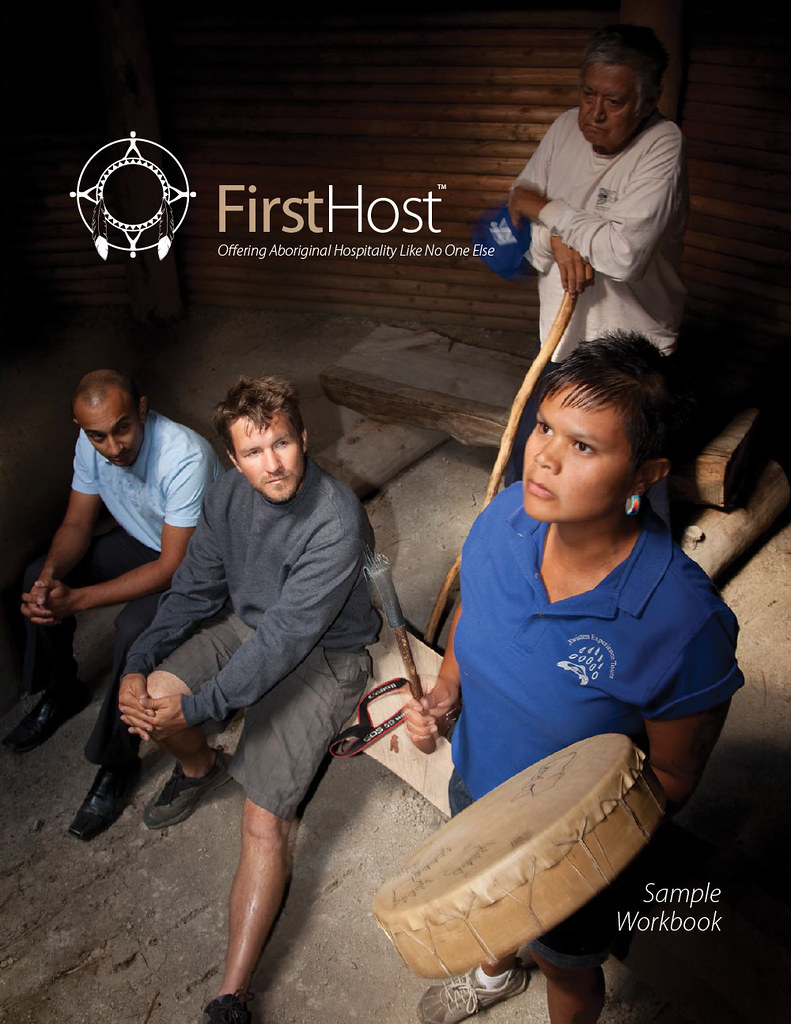
Another key component of the Indigenous tourism experience is the host. In BC, the FirstHost program supports the development of Indigenous hosts who are well trained, know what guests are looking for, and who can help provide an authentic cultural experience. The one-day tourism workshop is offered through ITBC and delivered throughout British Columbia
FirstHost was inspired by Hawaiian tourism pioneer, Dr. George Kanahele (1913-2000), who saw the impact tourism was having on indigenous culture and set out to educate the industry that “the relationship between place, host and guest must be one of equality” (Native Education College, 2014, p. 28). Participants learn about hospitality service delivery and the special importance of the host, guest, and place relationship. This well-received workshop, delivered by Indigenous trainers, is another reason Indigenous tourism continues to grow stronger in the province.
Take a Closer Look: Aboriginal Ecotourism Training Program
The Aboriginal Ecotourism Training Program (AETP) was born through a desire to increase workforce and community capacity for Indigenous tourism in coastal BC and developed in partnership between Vancouver Island University (VIU), North Island College (NIC), and the Heiltsuk Tribal Council (HTC), with support from Indigenous Tourism BC (ITBC) and funding through the Canada-British Columbia Job Fund.
Since 2014, 70 graduates from over 27 First Nations have successfully completed the Aboriginal Ecotourism Training Program (AETP) that features an innovative place-based, culturally relevant and experiential design to post-secondary learning. Many of these students have continued in the tourism sector or are engaged in ongoing post-secondary education in business and tourism.
Learn more through a video on the Aboriginal Ecotourism Training Program and the article Adventures in Ecotourism: Building Partnerships, Collaborations and Trust through Aboriginal Education .
Examples of BC Indigenous Tourism Development
Spotlight On: Moccasin Trails
Many exceptional leaders and entrepreneurs in Indigenous Tourism wear multiple hats. Besides family, community, and cultural responsibilities, this often includes many other complex roles within Indigenous Tourism development through sector, regional, and national associations, plus outreach as consultants beyond their own tourism business — sharing expertise that bridges cultures and systems.
One dynamic example is through the suite of tourism experiences, services and leadership offered by Frank Antoine and Greg Hopf of Moccasin Trails in the Kamloops area.
They describe that, “We wanted to bring people from around the world on the ancestral paths our people walked, have them taste the food we ate, sing the songs we sang, hear the stories that were passed down orally from generations ago, and travel down the rivers we canoed. In order to truly learn about our culture we felt the only way was to touch, smell, see, hear, and feel it. Our journey started hundreds of years ago but your journey will start right now with us at Moccasin Trails .
Their vision and motivation is very representative of the tangible, tireless and authentic energy that underlies much of Indigenous Tourism development.
Indigenous tourism in BC offers diverse visitor opportunities that range from arts and cultural attractions to authentic food and beverage experiences to wildlife tours that highlight the spiritual significance of BC’s natural places for Indigenous people.
Take a Closer Look: Indigenous Experiences — A Journey
The consumer website for Indigenous Tourism BC features things to do, places to see, trip planning tools, featured itineraries and stories. For more information, visit the Indigenous Tourism BC website .
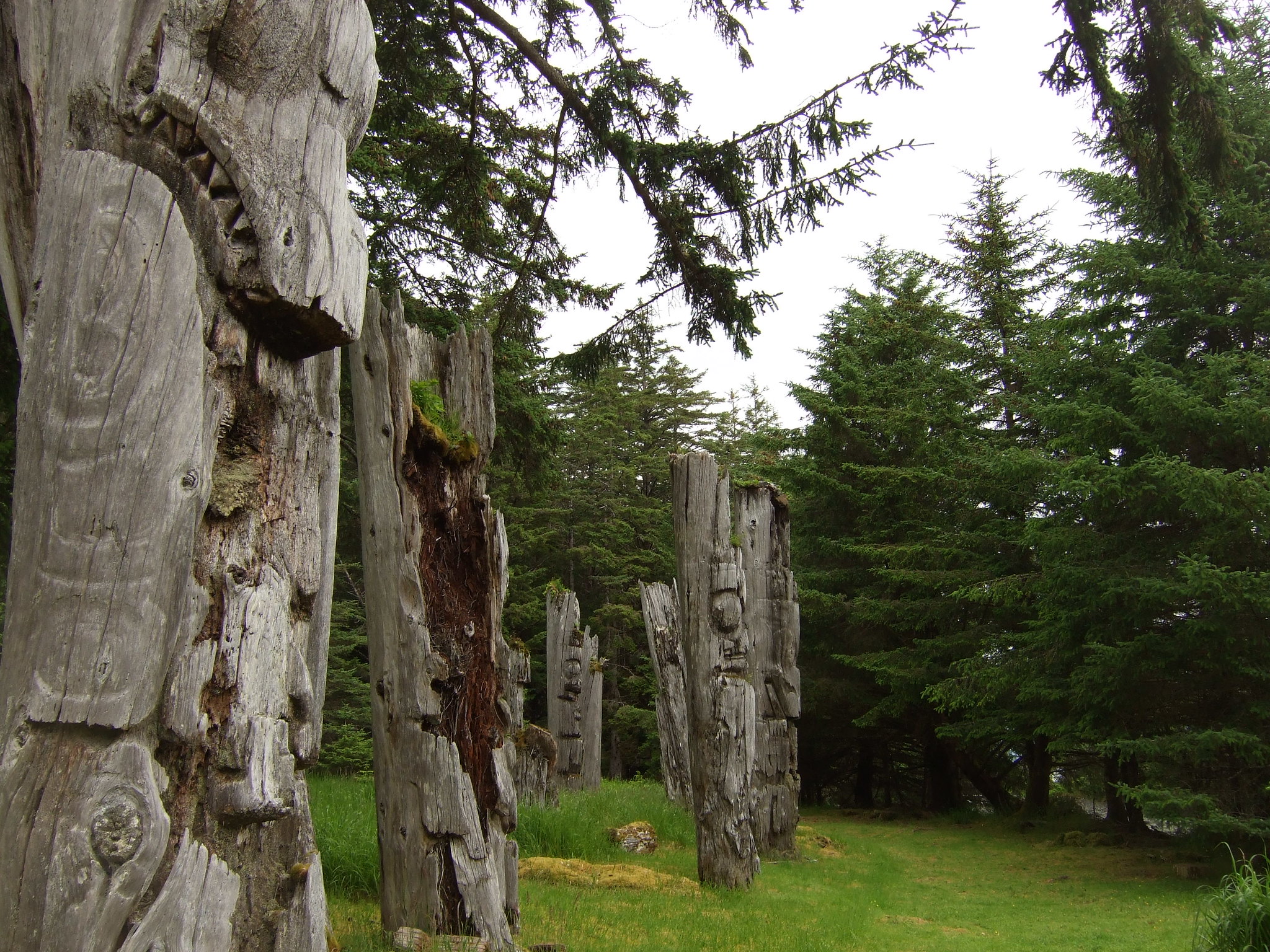
Examples of BC Indigenous tourism enterprises include:
- The Bill Reid Gallery of Northwest Coast Art in the heart of downtown Vancouver, home of the permanent collection of Bill Reid as well as contemporary exhibitions.
- St. Eugene Golf Resort & Casino , a First Nation-owned 4.5-star hotel with a golf course and casino, outside of Cranbrook in the Kootenay Rockies.
- Cariboo Chilcotin Jetboat Adventures , offering exciting and scenic tours of the Fraser River.
- Salmon n’ Bannock Bistro, offering authentic Indigenous food in urban Vancouver.
- Spirit Bear Lodge , in the Great Bear Rainforest, specialize in wildlife and Indigenous cultural experiences.
- Talaysay Tours offering Indigenous cultural and eco-tourism experiences in and around Vancouver, Squamish and the Sunshine Coast.
- Skwachàys Lodge , a downtown Vancouver luxury hotel, art gallery and store operating as a social enterprise and supporting Indigenous artists.
Take a Closer Look: UNESCO World Heritage List
This list, evolving from 1972 World Heritage Convention, identifies outstanding significant sites across the globe, linking the concepts of nature conservation and the preservation of cultural properties. The convention sets out the duties of governments in identifying potential sites and their role in protecting and preserving them. The list features an interactive map and an alphabetical list. To explore the more than 1,100 properties on the list, including 20 sites in Canada, visit the UNESCO World Heritage List .
The village of SG̱ang Gwaay Llnagaay (formerly Ninstints or Nan Sdins) is a prominent example of a UNESCO World Heritage Site in Canada, located on a small island off the west coast of Haida Gwaii.
While ITBC members are too numerous to detail here, one BC First Nation is often in the spotlight for its significant tourism and economic development activity, thanks to its physical and cultural assets and positive leadership. Let’s take a closer look at this example.
Osoyoos Indian Band
The Osoyoos Indian Band (OIB) is located in the Interior of BC. A main goal of the OIB has been to move from dependency to a sustainable economy like that which existed before contact (Centre for First Nations Governance, 2013).
Take a Closer Look: Centre for First Nations Governance Success Stories
The Centre for First Nations Governance is a non-profit organization dedicated to providing self-governance support to First Nations communities across Canada. It helps with planning, governance, the establishment of laws, and nation-rebuilding efforts. Its website features success stories, in video format, that highlight these efforts. For more information, visit the Centre for First Nations Governance website for Success Stories.
Okanagan First Nations once travelled widely to fish, gather, and hunt. Each year, the first harvests of roots, berries, fish, and game were celebrated during ceremonies honouring the food chiefs who provided for the people. During the winter, people returned to permanent winter villages. The names of many of the settlements in the Okanagan Valley — Osoyoos, Keremeos, Penticton and Kelowna — come from Indigenous words for these settled areas and attest to the long history of the Syilx people on this land.
Forty-five years ago, the OIB was bankrupt and living off government social assistance. In 1988, it sought to turn the tide on this history and created the Osoyoos Indian Band Development Corporation (OIBDC). Through focused leadership and initiative, the band has been able to develop agriculture, eco-tourism, and commercial, industrial, and residential developments on its 32,200 acre reserve lands. It does have the good fortune to be located in one of Canada’s premier agricultural and tourism regions; however, it has also taken a determined and well-crafted effort to become an example of Indigenous economic success.
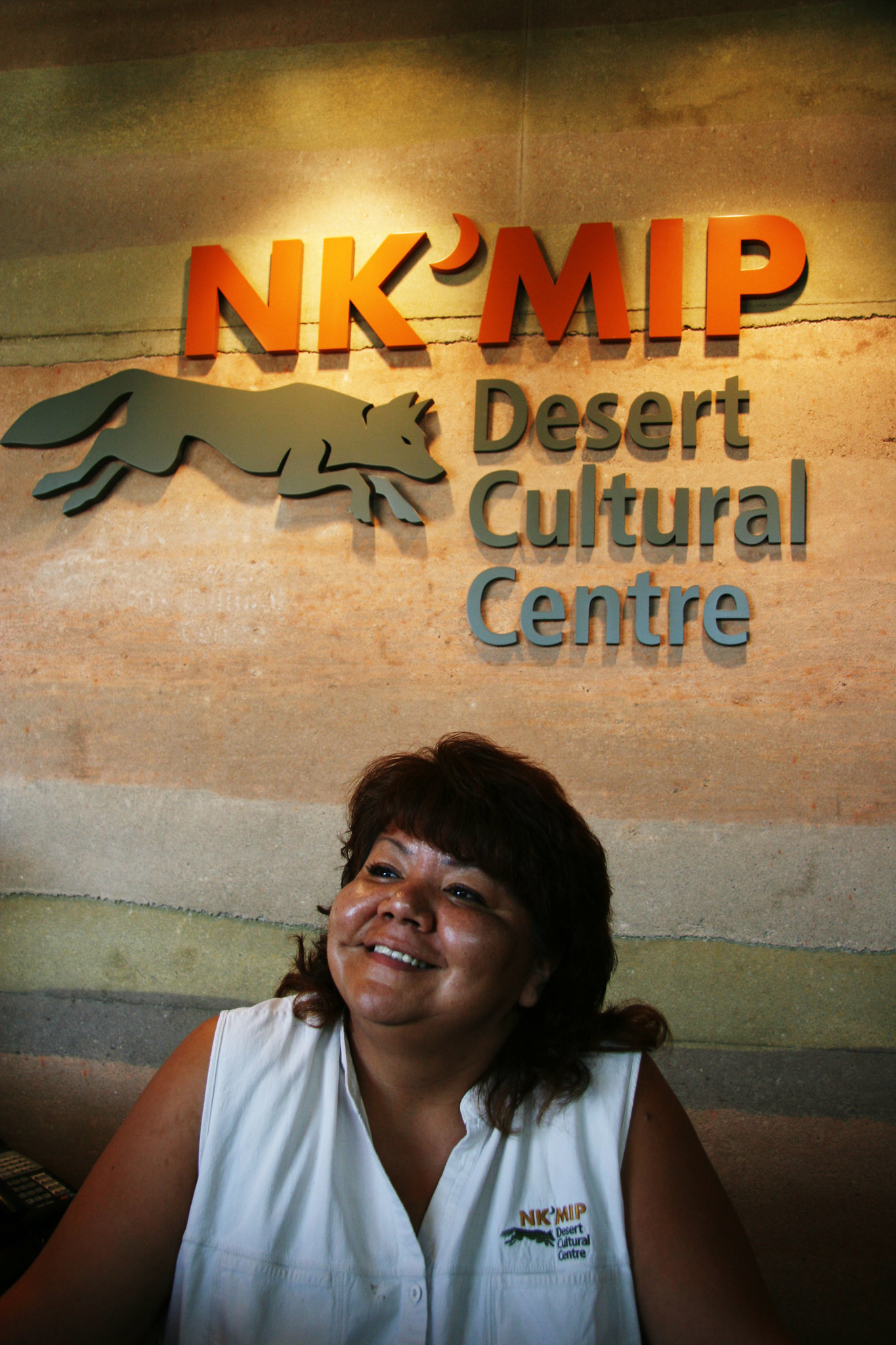
The OIBDC manages a number of tourism-related businesses including the Nk’Mip Campground and RV Park, Nk’Mip Canyon Desert Golf Course, Nk’Mip Desert Cultural Centre. In addition, the OIBDC have several prominent tourism-related partnerships, including with Baldy Mt. Ski Resort, Nk’Mip Cellars, Spirit Ridge Resort, and others (OIB, 2020). The area attracts about 400,000 visitors per year, and at peak tourist season there is essentially full employment among the more than 470 members of the Osoyoos reserve.
In addition to the core businesses and partnerships, many secondary businesses have formed. For example, the award-winning Nk’Mip Desert Cultural Centre promotes conservation efforts for desert wildlife and has also helped to create several spinoff businesses, including a landscaping business, a greenhouse for indigenous plants, a website development business, and a community arts and crafts market (LinkBC, 2012).
Language selection
- Français fr
Canadian Army
The Canadian Army is the land component of the Canadian Armed Forces and is its largest element. The Canadian Army produces soldiers who are well-trained, well-equipped, well-led and ready for operations at home and abroad. Our soldiers protect Canadians and their interests in a number of important ways. Find out more about the Canadian Army of today and our plans for the future .
- Army Social Media
- Command Team Social Media
Other Social Media

- Jump to: Page 1
- Jump to: Page 2
- Jump to: Page 3
- Jump to: Page 4
- Jump to: Page 5
- Jump to: Page 6
- Jump to: Page 7
- Canadian Army Communication Strategy 2024-2026
Canadian Army Reserve JOB FAIR 2024
A Mother, Leader & Soldier: An NCO’s Story for IWD
CADPAT Multi-Terrain (MT) Modernized Combat Uniform (MCU) Information Hub
Canadian Army updating branding along with operational dress
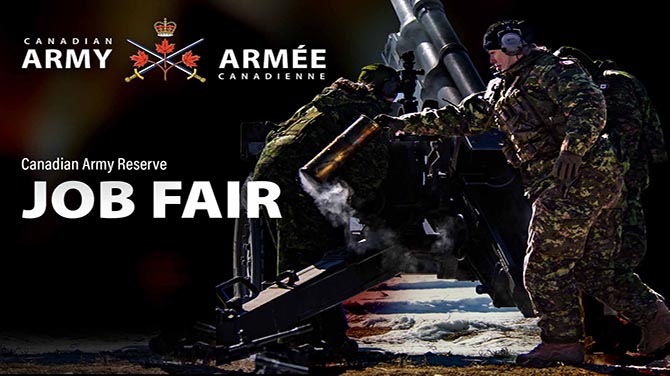
Services and information
Employment with the canadian army.
Available jobs and recruiters near you.
Bases and Units
Army bases and units across Canada
Canadian Army of Today
Mission, vision, role and footprint of the Canadian Army
Canadian Army Focus Areas
The way ahead for the Canadian Army.
Canadian Army Reserve
What is a Reservist? Find a Reserve Unit near you.
For the Soldier
Resources for Canadian Army soldiers.
Army Equipment
Weapons, vehicles, other equipment and upgrades.
Exercises and Operations
Information on Army exercises and operations that take place in Canada and around the world.
Canadian Army Programs
Programs supported by the Canadian Army
Commander and Senior Leaders
Meet our national command team.
History and Heritage
Learn about the history of the Army.
Support for Families
Local and nation-wide support and resources.
Canadian Army Podcast
Our soldiers tell their stories.
Honorary Appointments
Find out more about these key community leaders who support our units.
Showcasing the Army
The SkyHawks, Ceremonial Guard, Juno mascot and community engagement.

Most requested
- Canadian Army Reserve
- Employment
- Learning hub: Line of Sight
What we are doing
- Canadian Army Order 11-82 Hateful Conduct
- Strong, Secure, Engaged: Canada's Defence Policy
- Queen's Regulations and Orders (QR&O)
Publications
- Modernization Vital Ground: Digital Strategy
- Advancing with Purpose: The Canadian Army Modernization Strategy
- Canadian Army Journal
Laws and regulations
- Legislation and National Defence
- National Defence Act
- Crown Copyright

Victims and Survivors of Service Offences
Victims and Survivors of service offences find support within Canada’s military justice system.

Inappropriate Sexual Behaviour
Learn about sexual misconduct and how the Canadian Armed Forces (CAF) is addressing it.

Military Mental Health. You’re not alone.
Medical and mental health care, emergency contacts, support for you and your family
Page details

Want to create or adapt books like this? Learn more about how Pressbooks supports open publishing practices.
Chapter 12. Indigenous Tourism
12.4 Indigenous Tourism in BC
The Aboriginal Tourism Association of British Columbia (ATBC), now recognized as Indigenous Tourism BC (ITBC) , was founded in 1996 and was spurred by a research project that detailed the changing motivations of visitors to BC. The research results identified that specific target markets were particularly motivated to visit BC to experience local or regional Indigenous culture. Leveraging this information and initial organizational momentum, ITBC has matured to become a stable and effective organization by establishing funding partnerships with governments, developing a stakeholder membership model, and initiating a range of development strategies and tactics outlined in regularly updated action plans.
ITBC provides recognized leadership to support the estimated 401 Indigenous tourism related businesses operating in BC. These businesses generate $705 million indirect gross domestic output and provides 7,400 direct full-time jobs for Indigenous and non-Indigenous residents in BC through their activities (ITBC, 2019).
Spotlight On: Indigenous Tourism BC
Indigenous Tourism BC (ITBC) has gained an international reputation for effectiveness. Its role is to encourage the professional development of Indigenous cultural experiences and destinations in the province and to then support marketing those businesses to the world.
For more information featuring market-ready Indigenous tourism experiences within BC visit the external consumer-focused ITBC website .
For more details about ITBC’s history, structure and planning tools visit the ITBC internal corporate and stakeholder-focused website .
Since its inception, ITBC has grown to represent a diverse range of stakeholder businesses and organizations, including campgrounds, art galleries and gift shops, hotels, eco-lodges and resorts, Indigenous restaurants and catering services, cultural heritage sites and interpretive centres, kayak and canoe tours, adventure tourism operations, and guided hikes through heritage sites (Aboriginal Tourism BC, 2012). It has also proven adept at online promotion and social media, has also become world renowned for its strategic approach to Indigenous tourism development.
Take a Closer Look: Indigenous Tourism Trip Planner App
Indigenous Tourism BC marketing staff are regularly updating not just their consumer website, but also their social media platforms with rich visual assets, including promotional videos for the sector, regions, and specific companies.
In 2020, they also released a new app for Indigenous Tourism trip planning, which includes some virtual experiences. Learn more by downloading it on your digital device at Indigenous BC Trip Planner App .
A Strategic Approach to Growth
In 2017, the organization now known as ITBC released its five-year strategic plan, entitled “Pulling Together,” which identified targets for Indigenous cultural tourism industry success in BC. Its goals by 2022 included:
- Increased provincial revenue of $75 million
- Employment at 4,950 full-time equivalent positions
- 128 market-ready Indigenous cultural tourism businesses
To achieve these targets, the plan focused on five distinct strategic performance areas:
- Experience Development
- Partnerships
- Organizational Excellence
Following good overall tourism planning principles, ITBC ensured its plan aligned with Destination BC’s strategy, Welcoming Visitors—Benefiting Locals—Working Together, A Strategic Framework for Tourism in BC , as well as Canada’s federal tourism strategy. Consistent with this sustained alignment, recent efforts have placed renewed emphasis on the need for market readiness.
Push for Market Readiness
As we’ve learned elsewhere in this textbook, today’s travellers are more complex than in the past and have higher expectations. Potential guests are well acquainted with technology and have the world at their fingertips. For this reason, it’s important that Indigenous operators ensure they are sufficiently ready to run as a tourism business and compete in an increasingly crowded tourism marketplace.
There are three categories of readiness, each with a set of criteria that must be met (Aboriginal Tourism Association of Canada, 2013):
- A visitor-ready operation is often a start-up or small operation that might qualify for a listing in a tourism directory but not be considered ready for cost-shared promotions with other businesses due to lack of amenities or predictability.
- A market-ready business must meet visitor-ready criteria plus demonstrate a number of other strengths around customer service, marketing materials, published pricing and payments policies, short response times and reservations systems, and so on.
- Export-ready criteria include the previous categories, plus sophisticated travel distribution trade channels to attract out-of-town visitors. They provide highly reliable services to all guests, particularly those traveling with groups.
By educating cultural tourism businesses about these standards, and then creating incentives for marketing opportunities, ITBC helps to raise the bar for BC Indigenous cultural tourism experiences. Its goal is to support as many operators toward market readiness (the second category) as possible so that they may eventually become export ready alongside other BC tourism experiences.
Drag the following descriptors to the appropriate category for market readiness:
Take a Closer Look: Authentic Indigenous
Authentic Indigenous is a marketing initiative by Indigenous Tourism BC (ITBC) – a successful designation program that identifies strong cultural Indigenous tourism experiences as Authentic Indigenous. With this designation, ITBC meets the demands of travellers seeking unique, educational, eco-friendly and culturally appropriate experiences within Indigenous communities across BC. Find out more by visiting the Authentic Indigenous web page .

Another key component of the Indigenous tourism experience is the host. In BC, the FirstHost program supports the development of Indigenous hosts who are well trained, know what guests are looking for, and who can help provide an authentic cultural experience. The one-day tourism workshop is offered through ITBC and delivered throughout British Columbia
FirstHost was inspired by Hawaiian tourism pioneer, Dr. George Kanahele (1913-2000), who saw the impact tourism was having on indigenous culture and set out to educate the industry that “the relationship between place, host and guest must be one of equality” (Native Education College, 2014, p. 28). Participants learn about hospitality service delivery and the special importance of the host, guest, and place relationship. This well-received workshop, delivered by Indigenous trainers, is another reason Indigenous tourism continues to grow stronger in the province.
Take a Closer Look: Aboriginal Ecotourism Training Program
The Aboriginal Ecotourism Training Program (AETP) was born through a desire to increase workforce and community capacity for Indigenous tourism in coastal BC and developed in partnership between Vancouver Island University (VIU), North Island College (NIC), and the Heiltsuk Tribal Council (HTC), with support from Indigenous Tourism BC (ITBC) and funding through the Canada-British Columbia Job Fund.
Since 2014, 70 graduates from over 27 First Nations have successfully completed the Aboriginal Ecotourism Training Program (AETP) that features an innovative place-based, culturally relevant and experiential design to post-secondary learning. Many of these students have continued in the tourism sector or are engaged in ongoing post-secondary education in business and tourism.
Learn more through a video on the Aboriginal Ecotourism Training Program and the article Adventures in Ecotourism: Building Partnerships, Collaborations and Trust through Aboriginal Education .
Examples of BC Indigenous Tourism Development
Spotlight On: Moccasin Trails
Many exceptional leaders and entrepreneurs in Indigenous Tourism wear multiple hats. Besides family, community, and cultural responsibilities, this often includes many other complex roles within Indigenous Tourism development through sector, regional, and national associations, plus outreach as consultants beyond their own tourism business — sharing expertise that bridges cultures and systems.
One dynamic example is through the suite of tourism experiences, services and leadership offered by Frank Antoine and Greg Hopf of Moccasin Trails in the Kamloops area.
They describe that, “We wanted to bring people from around the world on the ancestral paths our people walked, have them taste the food we ate, sing the songs we sang, hear the stories that were passed down orally from generations ago, and travel down the rivers we canoed. In order to truly learn about our culture we felt the only way was to touch, smell, see, hear, and feel it. Our journey started hundreds of years ago but your journey will start right now with us at Moccasin Trails .
Their vision and motivation is very representative of the tangible, tireless and authentic energy that underlies much of Indigenous Tourism development.
Indigenous tourism in BC offers diverse visitor opportunities that range from arts and cultural attractions to authentic food and beverage experiences to wildlife tours that highlight the spiritual significance of BC’s natural places for Indigenous people.
Take a Closer Look: Indigenous Experiences — A Journey
The consumer website for Indigenous Tourism BC features things to do, places to see, trip planning tools, featured itineraries and stories. For more information, visit the Indigenous Tourism BC website .

Examples of BC Indigenous tourism enterprises include:
- The Bill Reid Gallery of Northwest Coast Art in the heart of downtown Vancouver, home of the permanent collection of Bill Reid as well as contemporary exhibitions.
- St. Eugene Golf Resort & Casino , a First Nation-owned 4.5-star hotel with a golf course and casino, outside of Cranbrook in the Kootenay Rockies.
- Cariboo Chilcotin Jetboat Adventures , offering exciting and scenic tours of the Fraser River.
- Salmon n’ Bannock Bistro , offering authentic Indigenous food in urban Vancouver.
- Spirit Bear Lodge , in the Great Bear Rainforest, specialize in wildlife and Indigenous cultural experiences.
- Talaysay Tours offering Indigenous cultural and eco-tourism experiences in and around Vancouver, Squamish and the Sunshine Coast.
- Skwachàys Lodge , a downtown Vancouver luxury hotel, art gallery and store operating as a social enterprise and supporting Indigenous artists.
Take a Closer Look: UNESCO World Heritage List
This list, evolving from 1972 World Heritage Convention, identifies outstanding significant sites across the globe, linking the concepts of nature conservation and the preservation of cultural properties. The convention sets out the duties of governments in identifying potential sites and their role in protecting and preserving them. The list features an interactive map and an alphabetical list. To explore the more than 1,100 properties on the list, including 20 sites in Canada, visit the UNESCO World Heritage List .
The village of SG̱ang Gwaay Llnagaay (formerly Ninstints or Nan Sdins) is a prominent example of a UNESCO World Heritage Site in Canada, located on a small island off the west coast of Haida Gwaii.
While ITBC members are too numerous to detail here, one BC First Nation is often in the spotlight for its significant tourism and economic development activity, thanks to its physical and cultural assets and positive leadership. Let’s take a closer look at this example.
Osoyoos Indian Band
The Osoyoos Indian Band (OIB) is located in the Interior of BC. A main goal of the OIB has been to move from dependency to a sustainable economy like that which existed before contact (Centre for First Nations Governance, 2013).
Take a Closer Look: Centre for First Nations Governance Success Stories
The Centre for First Nations Governance is a non-profit organization dedicated to providing self-governance support to First Nations communities across Canada. It helps with planning, governance, the establishment of laws, and nation-rebuilding efforts. Its website features success stories, in video format, that highlight these efforts. For more information, visit the Centre for First Nations Governance website for Success Stories.
Okanagan First Nations once travelled widely to fish, gather, and hunt. Each year, the first harvests of roots, berries, fish, and game were celebrated during ceremonies honouring the food chiefs who provided for the people. During the winter, people returned to permanent winter villages. The names of many of the settlements in the Okanagan Valley — Osoyoos, Keremeos, Penticton and Kelowna — come from Indigenous words for these settled areas and attest to the long history of the Syilx people on this land.
Forty-five years ago, the OIB was bankrupt and living off government social assistance. In 1988, it sought to turn the tide on this history and created the Osoyoos Indian Band Development Corporation (OIBDC). Through focused leadership and initiative, the band has been able to develop agriculture, eco-tourism, and commercial, industrial, and residential developments on its 32,200 acre reserve lands. It does have the good fortune to be located in one of Canada’s premier agricultural and tourism regions; however, it has also taken a determined and well-crafted effort to become an example of Indigenous economic success.

The OIBDC manages a number of tourism-related businesses including the Nk’Mip Campground and RV Park, Nk’Mip Canyon Desert Golf Course, Nk’Mip Desert Cultural Centre. In addition, the OIBDC have several prominent tourism-related partnerships, including with Baldy Mt. Ski Resort, Nk’Mip Cellars, Spirit Ridge Resort, and others (OIB, 2020). The area attracts about 400,000 visitors per year, and at peak tourist season there is essentially full employment among the more than 470 members of the Osoyoos reserve.
In addition to the core businesses and partnerships, many secondary businesses have formed. For example, the award-winning Nk’Mip Desert Cultural Centre promotes conservation efforts for desert wildlife and has also helped to create several spinoff businesses, including a landscaping business, a greenhouse for indigenous plants, a website development business, and a community arts and crafts market (LinkBC, 2012).
The organization responsible for developing and marketing Indigenous tourism experiences in B.C. in a strategic way. Marketing stakeholder members are over 51% owned and operated by First Nations, Métis, and Inuit.
Often a start-up or small operation that might qualify for a listing in a tourism directory but is not ready for more complex promotions (like cooperative marketing); may not have a predictable business cycle or offerings.
A business that goes beyond visitor readiness to demonstrate strengths in customer service, marketing, pricing and payments policies, response times and reservations systems, and so on.
The highest level of market readiness, with sophisticated travel distribution trade channels, to attract out-of-town visitors and highly reliable service standards, particularly with groups.
An Indigenous tourism workshop focusing on hospitality service delivery and the special importance of the host, guest, and place relationship.
Introduction to Tourism and Hospitality in BC - 2nd Edition Copyright © 2015, 2020, 2021 by Morgan Westcott and Wendy Anderson, Eds is licensed under a Creative Commons Attribution 4.0 International License , except where otherwise noted.
Share This Book

IMAGES
COMMENTS
Our People Make the Difference. Our organization is built upon the strength and commitment of our directors, staff and Stakeholders. View the team profiles below to learn more about the people that are working together to showcase British Columbia's Indigenous tourism opportunities to the world. Paula Amos Chief Marketing and Development ...
ITAC staff are responsible for the day to day operations of the organization including activities and plans as approved by the Board. News; ... in management at her community's tourism business Xatśūll Heritage Village before starting her 8-year career at Indigenous Tourism BC. Melanie's passion for Indigenous communities and seeing ...
Indigenous Tourism British Columbia (ITBC) is a non-profit, membership-based organization that is committed to growing and promoting a sustainable, culturally rich Indigenous tourism industry ...
Indigenous Tourism BC celebrates and strives to support the success of Indigenous women on their unique paths. We uplift these good stories so that all recognize Indigenous women's power, knowledge, and achievements and the boundless possibilities within their reach. Get Inspired. Indigenous women are contributing to their communities through ...
Indigenous Tourism BC Tel: 604 921-1070 Fax: 604 921-1072 T-Free Fax: 1-877-533-7773 [email protected] Destination BC Karen Tunkara Director, Indigenous & Regional Partnerships Tel: 250.419.8777 [email protected] Subscribe to Directions, Destination BC's e-newsletter, for the latest news and program updates.
"Indigenous Tourism BC is thrilled to receive this boost in funding and support for training initiatives, which will strengthen the industry and the provincial economy. We look forward to ramping up this project, as the training and development areas are crucial to our long-term plans and empowering Indigenous communities and people. ...
Membership Info. ITAC is excited to have an incredible partnership with Indigenous Tourism BC (ITBC). Working together, the two organizations are furthering the progress of the Indigenous tourism industry in British Columbia and are providing Indigenous tourism operators with greater access to marketing, development and partnership opportunities.
The 8th Annual International Indigenous Tourism Conference. Each year, on the final day of the International Indigenous Tourism Conference conference, the Indigenous Tourism Association of Canada and Indigenous Tourism BC recognize organizations and individuals for their outstanding achievements in tourism, both in B.C. and nationally.
A one-time allocation of $3.7 million will support Indigenous Tourism BC (ITBC) in leading the Indigenous tourism industry to its pre-pandemic levels of success by 2024. ... ITBC reports 91% of its stakeholders were closed or operating with limited capacity, and 74% of Indigenous businesses had to lay off staff during the pandemic.
B.C. has launched a new three-year roadmap for rebuilding and revitalizing tourism, creating jobs and opportunities for people and communities in every part of the province. "B.C. is a world-class destination, and we know the pandemic has hurt tourism," said Melanie Mark, Minister of Tourism, Arts, Culture and Sport.
Henry says Indigenous tourism in Canada has grown by $300 million from 2014 to 2017 to a total of $1.7 billion, and saw an increase of about 7,000 jobs. While tourism overall grew by 14 per cent ...
The Aboriginal Tourism Association of British Columbia (ATBC), now recognized as Indigenous Tourism BC (ITBC), was founded in 1996 and was spurred by a research project that detailed the changing motivations of visitors to BC. The research results identified that specific target markets were particularly motivated to visit BC to experience ...
This application-based funding continues to support Visitor Centre staff in communities across BC to strengthen relationships and create opportunities for partners to collaborate and work together on impactful Indigenous focused projects, engaging activities, and training. ... Indigenous Tourism BC "Indigenous Tourism BC is proud to be a ...
The Government of BC made a legal commitment to reconciliation by implementing the UN Declaration in its own BC Declaration on the Rights of Indigenous Peoples Act and further developing the Declaration Act Action Plan, which includes 89 specific actions every ministry in government will take to create a better province for Indigenous Peoples in BC.
Meet Our Executive Leadership Team. Destination BC's executive team is led by the CEO and includes leaders from across the organization's core business groups. The CEO achieves corporate goals and priorities set by the Board, sets standards for organizational conduct, and recommends new initiatives to the Board. Richard Porges President and ...
Indigenous Tourism BC (ITBC) has released Strengthening Our Roots and Branches: Corporate Strategy 2023-2027 — a five-year plan that is proactive to the increased interest in Indigenous tourism from Indigenous communities and entrepreneurs. The strategy is committed to renewed partnerships, organizational structure and will focus on key areas that will create a healthy, sustainable and ...
Indigenous Tourism BC marketing staff are regularly updating not just their consumer website, but also their social media platforms with rich visual assets, including promotional videos for the sector, regions, and specific companies. In 2020, they also released a new app for Indigenous Tourism trip planning, which includes some virtual ...
On June 21, we mark National Indigenous Peoples Day. This is a day for all Canadians to recognize and celebrate the unique heritage, diverse cultures and outstanding contributions of First Nations, Inuit and Métis peoples. As part of our celebration this year, a few of our Indigenous employees have graciously shared their stories with us.
The Canadian Army is the land component of the Canadian Armed Forces and is its largest element. The Canadian Army produces soldiers who are well-trained, well-equipped, well-led and ready for operations at home and abroad. Our soldiers protect Canadians and their interests in a number of important ways. Find out more about the Canadian Army of ...
Indigenous Tourism BC marketing staff are regularly updating not just their consumer website, but also their social media platforms with rich visual assets, including promotional videos for the sector, regions, and specific companies. In 2020, they also released a new app for Indigenous Tourism trip planning, which includes some virtual ...